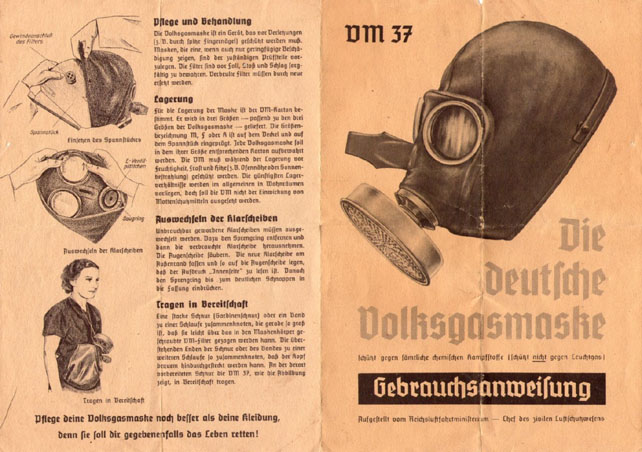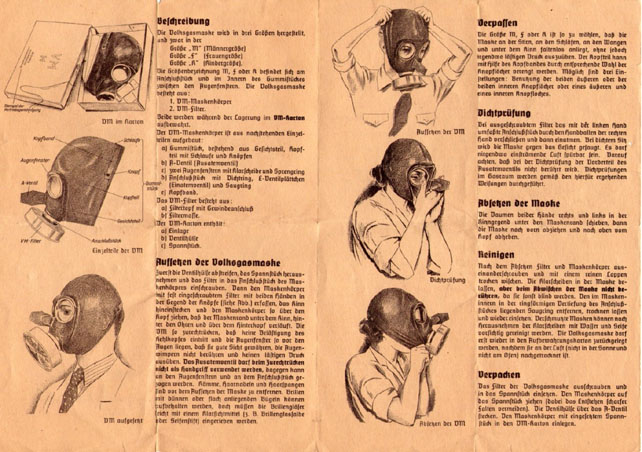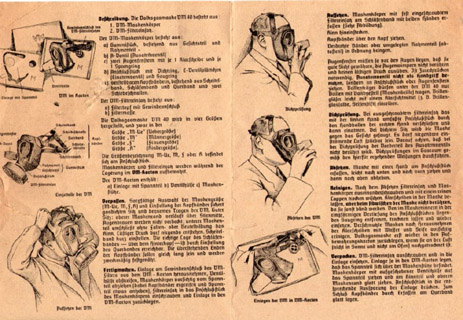
[Page Forty]
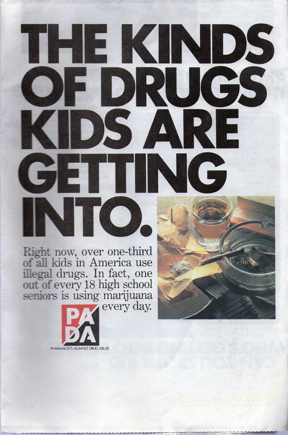
United States government anti-drug propaganda leaflet
[#406]
[Note: This 1980s pamphlet is unintentionally quite amusing. President Reagan's 'War on Drugs' was nothing more than a war on the poor. Like today, the real criminals are never touched. The government's Central Intelligence Agency (CIA) was caught some years back shipping cocaine into the country. If a society would like to keep its youth off illegal drugs maybe it should stop helping to bring them in. Maybe it should give its citizens something to live for. Or how about giving its young people something to dream about or look forward to other than empty capitalist slavery.]
[The werewolf likeness is startling!]
White Wolf
[#407]
[Note: The caucasian woman, endangered species indeed.]
[United States Navy mask. Unknown era. Rubber is marked made by Goodyear.]
Gas masks
[#408]
[Note: Nothing is perhaps more ominous in war than the impersonal soldier obscured by his gas mask. Here is a small example of the many designs of various countries and eras.]
[Below: United States Navy gas mask - dated 5-45. This unique design held the gas mask filter behind the head.]
[Below: Side-view.]
[Below: Third Reich civilian gas mask design (Luftschutz 'DM37'). This early model covers the entire head.]
[Below:Side-view..]
[Below: Waffen mark, located on the side of mask.]
[Below: Third Reich civilian gas mask design (Luftschutz 'DM40'). This model only covers the face and is not Waffen marked.]
[Below: Side-view.]
[Below: Third Reich civilian gas mask design (Luftschutz), boxed. Note the black color variation.]
[Below: Waffen mark, located on the side of mask.]
[Below: Here is a sheet of instructions that came with the original 1937 Luftshutz 'DM37' gas masks. Note that the original design covered the entire head. Click the image for a larger view.]
[Below: Reverse of above instruction sheet]
[Below: Here is a different sheet of instructions, for the 'DM40' model signifing the model's year. Click the image for a larger view.]
[Below: Reverse of above instruction sheet]
[Below: Third Reich soldier gas mask. Very high quality design.]
[Below: Side-view.]
[Below: Waffen marked on filter.]
[Below: Finnish model. Notice the filter placement on the side of the mask instead of the front. This design alteration was used by several countries.]
[Below: Side-view.]
[Below: Russian Cold War era gas mask. Full head coverage design.]
[Below: Side-view.]
[Below: Eastern Europe (Czechoslovakia). Cold War. This design was copied off of an American mask of the time. Notice the filter placement is in the cheek. It also has a straw for the wearer to be able to drink water without having to take off the mask.]
[Below: Side-view.]
[Below: Cheek filters, sealed in a aluminum packets]
[Below: Israeli civilian design. Curious that the language on the mask/filter is German.]
[Below: Side-view.]
[Below: Filter.]
[Below: Instructions in Hebrew.]
[Below: Eastern Europe. Cold War. This mask is made of a canvas material.]
[Below: Side-view.]
[Below: Another Eastern Europe Cold War relic... this time from Czechoslovakia. This is called the 'Model Z'. This mask is unique because it features a bakelite piece which the filter attaches to...strange to see on a gas mask.]
[Below: Three dates stamped on inside of mask...]
[Below: Canvas carrying bag.]
[Below: This mask is from Poland.]
[Below: This is the gas mask bag.]
[Below: These wax sticks are used on the inside of the lenses as an anti-fogging agent.]
[Below: Here is another mask from Poland. Circa 1985.]
[Below: The canister filter is quite large and heavy. I'm unsure what use this design had...]
[Below: Gas mask bag with separate compartments for mask, filter and filter tube.]
[Below: Manufacturing and date stamp found on inner bag.]
[Below: In a separate buttoned pouch inside the bag is this canister containing extra lenses.]
[Below: This is an American gas mask, unknown era. It seems to be disposable, as its very simple and cheap. Unlike the other masks featured here, this one is for chemical warfare only. The others are NBC=Nuclear, Biological, Chemical. This example is missing its lenses.]
[Below: This is the German 'Drager' model. Definitely one of the best masks made today.]
[Below: Filter]
[Below: Plastic carrying case]
[Below: Drager manufacturer stamp on carrying case]
[Below: Instruction sheet]
[Below: Here is a German sealed container holding a gas mask filter - top view. This is unrelated to the Drager mask above.]
[Below: Side view.]
[Below: Sticker - side view - 'Hier vorsichtig aufschneiden' = 'Cut here carefully'.]
[Below: After cutting the package open - filter - top view.]
[Below: Filter - side view.]
[Below: This is a Yugoslavian gas mask. It is high quality and has a better-than-usual suspension system. It also has glass lenses, something not often seen on gas masks.]
[Below: Gas mask bag.]
[Below: Export stamp.]
[Below: Flannel cloths to clean the lenses.]
[Below: Instructions made for export. Note that the 'glasses should ce cleaned with a flannel cloth soaked with a soup'!!! Unfortunately it doesn't specify which kind of soup, so I think I'll try chicken noodle!]
[Below: This gasmask was also given to civilians. It was in its own bag and came with a protective hood/sheet]
[Below: Filter]
[Below: Filter reverse]
[Below: Bag containing hood/sheet (dated 1986)]
[Below: Bag containing hood/sheet (reverse)]
[Below: Bag- it says 'kit for personal protection of citizens']
[Below: Instructional manual]
[Below: Pages within manual]
[Below: Pages within manual]
[Below: Pages within manual]
[Below: Danish M44 gas mask. This is an extremely robust and quality mask. The rubber of the mask itself is heavier than any mask on this page. The lenses are made of a thick glass. This thing must have been expensive to make. It is heavily marked multiple times with '44'.]
[Below: Left side of mask.]
[Below: Close-up of markings on left side of mask.]
[Below: Right side of mask.]
[Below: Close-up of markings on right side of mask.]
[Below: Back of mask.]
[Below: Close-up of markings on back of mask straps.]
[Below: Two gas mask filters come standard packed in bag.]
[Below: Two pieces of foam separate the two filters from each other during storage.]
[Below: Gas mask bag, made of a very heavy canvas.]
[Below: Gas mask bag side, showing pocket and ring for strap. An identical pocket is found on the other side as well.]
[Below: Close-up of inside lid of gas mask bag.]
[Below: Gas mask bag strap.]
[Below: Instruction book. Note it is dated June 1967.]
[Below: Page 3 of 12 page booklet of instructions.]
[Below: This gas mask was marketed as a 'Viet Cong' Vietnam War era mask... but I'm unsure of this.]
[Below: Side view of mask. Note the bizarre filter placement on the cheek! This is very awkward...]
[Below: Close-up of markings inside mask. Other than these few marks the mask is totally unmarked.]
[Below: Flimsy gas mask bag.]
[Below: Interior of gas mask bag showing pouch with round tin case.]
[Below: Round tin case. What's inside this? I didn't open it, so I'm not sure. I'm guessing gold coins!]
[Below: This is a Swiss gas mask. Very high quality.]
[Below: Side view of mask.]
[Below: I'm unsure what this plastic tag is for?]
[Below: This plastic mold is to keep the mask in its proper shape during storage. An extra frill I've not seen in any other mask.]
[Below: Standard Nato sized filter, shrinkwrapped.]
[Below: Wax stick used for anti-fogging. It is placed on the inside of the lenses.]
[Below: Cloth for cleaning the lenses.]
[Below: Manufacturer markings.]
[Below: Heavy waterproof bag.]
[Below: NATO military French ARF-A.]
[Below: Inside view - note the drinking straw.]
[Below: Filter.]
[Below: This protective foam is found inside the mask to protect the lense.]
[Below: Gas mask bag - front.]
[Below: Gas mask bag - reverse.]
[Below: NATO military MP5 Polish gas mask. This was the first gas mask adopted by Polish Land Forces after the political turmoil of 1989 and the birth of the Third Polish Republic. It's a direct copy of the French ARF.]
[Below: Inside view - note the drinking straw.]
[Below: Italian made filter.]
[Below: Close-up of tag.]
[Below: Gas mask bag - front.]
[Below: Gas mask bag - reverse.]
[Below: Polish MP-4 gas mask. Copied off of the American model of the period.]
[Below: Close-up of markings on the side of mask.]
[Below: Close-up of markings on the inside of mask.]
[Below: Mask with Styrofoam insert.]
[Below: Styrofoam insert. This helps keep the shape of the mask intact during storage.]
[Below: Filters in sealed foil package.]
[Below: Spare lense and cap.]
[Below: Small plastic bottle, marked 1986, containing cleaning cloth.]
[Below: Cleaning cloth.]
[Below: Gas mask bag.]
[Below: Instructions side A.]
[Below: Instructions side B.]
[Below: This very strange mask was used for riot control during the Vietnam War era.]
[Below: Side-view revealing a very animalistic snout shape.]
[Below: Identification numbers on the inside/bottom.]
[Below: Now this is bizarre. This is a Polish gas mask for the wounded. Very strange, I've never heard of something like this before. The strip on the bottom of the mask is a heavy, thick rubber.]
[Below: Side view - you can see the ties on the back here.]
[Below: These rubber tubes I presume are to help against fogging of the lenses.]
[Below: Second view.]
[Below: Ink marking inside mask... it didn't stamp well!]
[Below: Second set of numbers on inside of mask.]
[Below: Gas mask canister.]
[Below: Side view of gas mask canister.]
[Below: Italian M59 Cold War era gasmask.]
[Below: Side close-up.]
[Below: Reverse showing suspension system.]
[Below: Filter box.]
[Below: Filter box - side view.]
[Below: Filter - side view.]
[Below: Filter - top view.]
[Below: Manual in seven languages.]
[Below: Manual - English pages.]
[Below: Manual - English page.]
[Below: German World War One gas mask. This ominous looking mask is made from leather and is dated April 1918.]
[Below: The lenses have a strange weblike piece behind them. This picture is taken from inside the mask. Imagine the horrors and human suffering that has been seen through these lenses...]
[Below: This is the steel canister that holds the mask and its accesories.]
[Below: Inside the canister, on the lid, is a compartment which holds extra lenses.]
[Below: Here is a view of the compartment door open revealing a packet containing extra lenses.]
[Below: The compartment contains six sets of lenses in all.]
[Below: This is a view of the bottom inside of the canister. It contains basic directions for use of the gas mask.]
[Below: Lucky I didn't get attacked wearing this thing!]
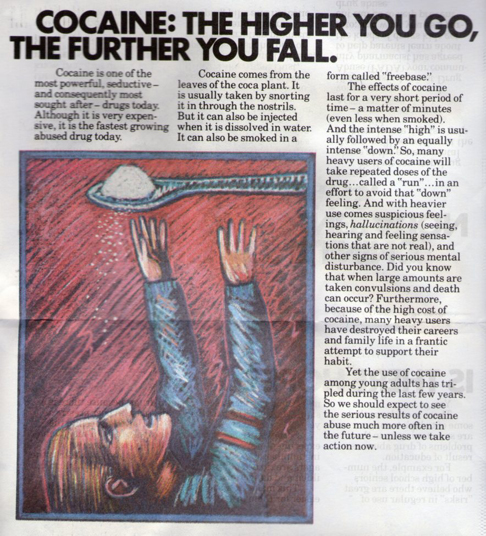
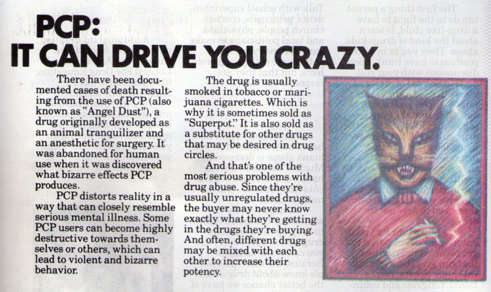
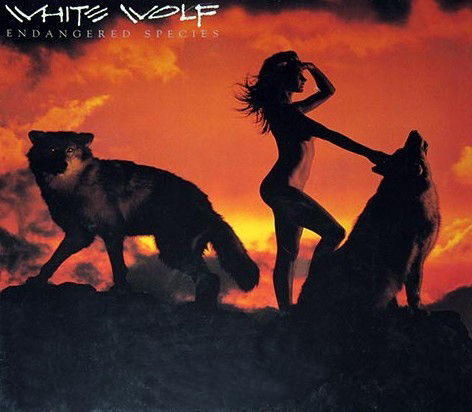



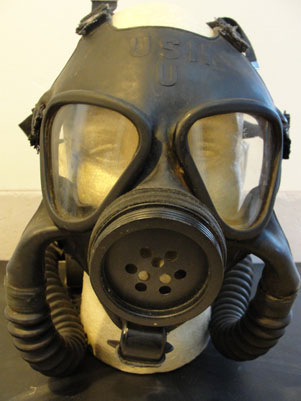
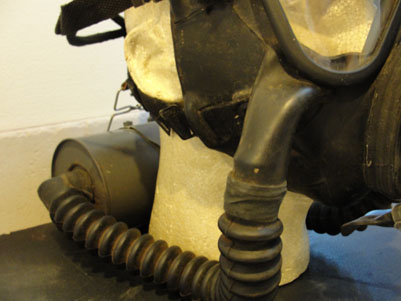
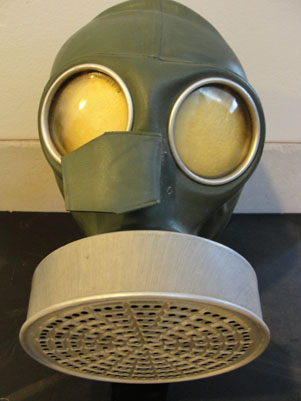

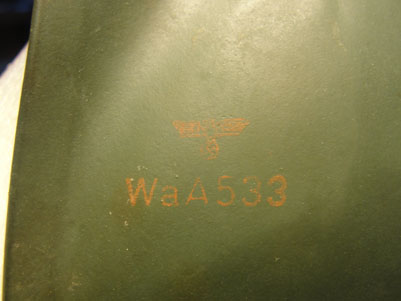
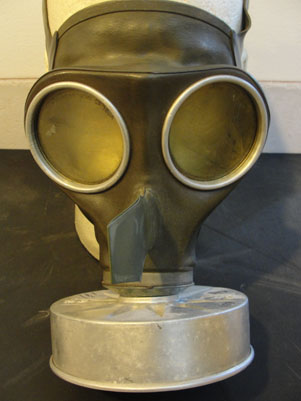



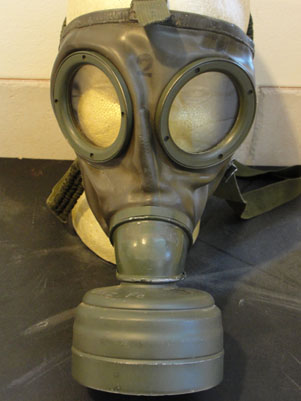
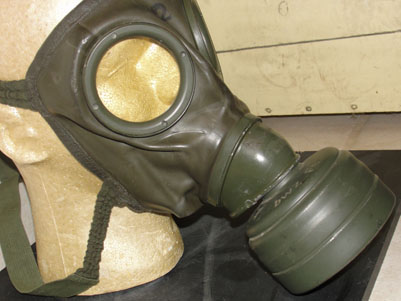
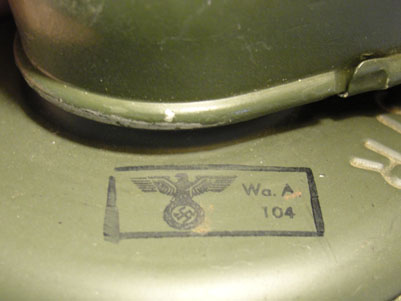
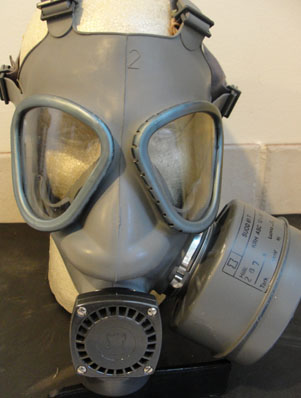
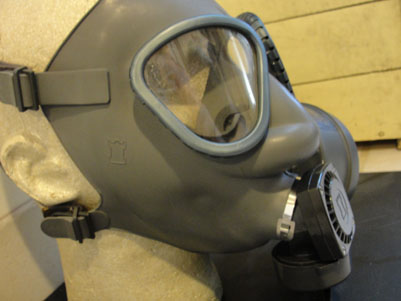
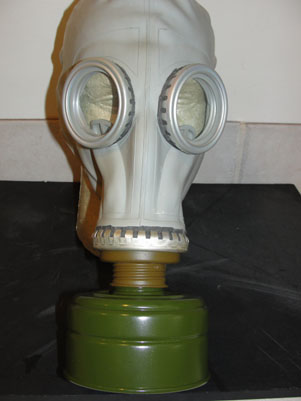
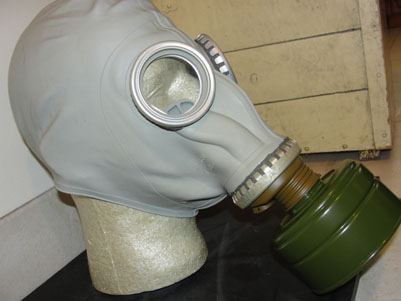
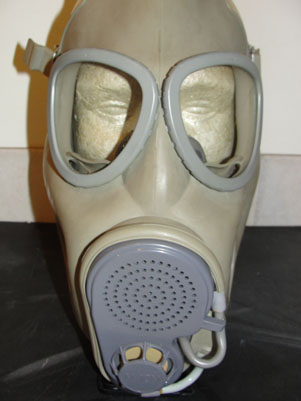



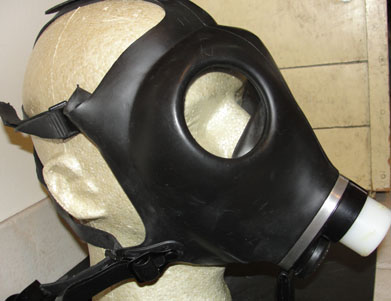
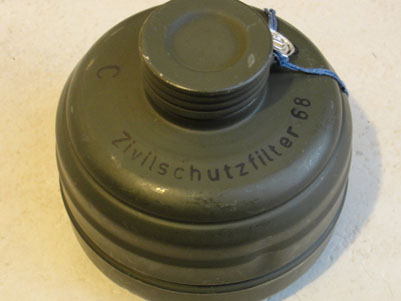
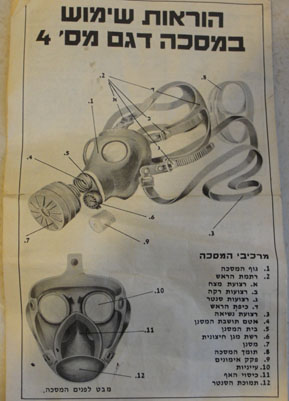

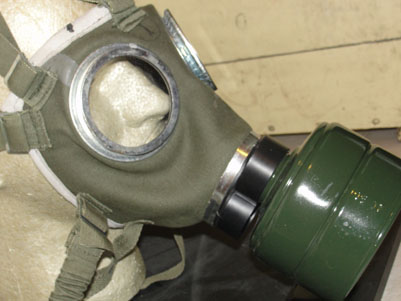
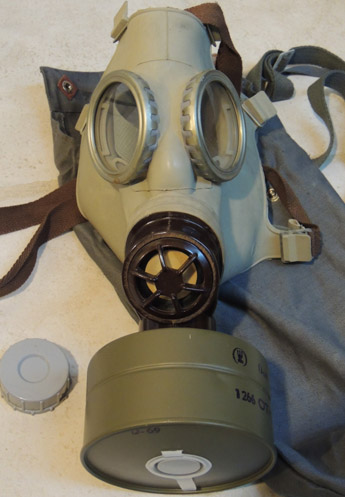
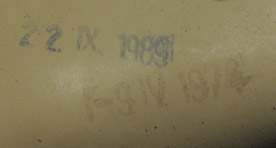

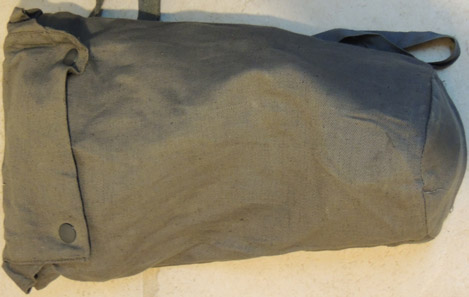
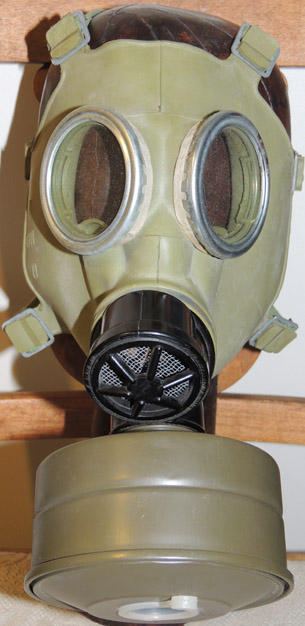
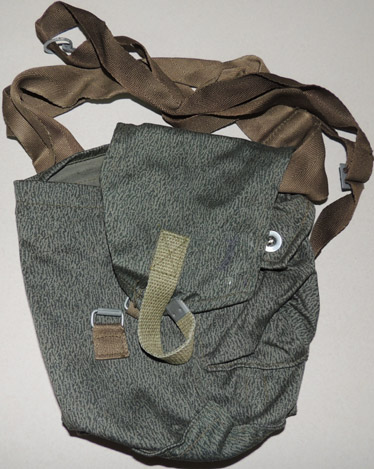
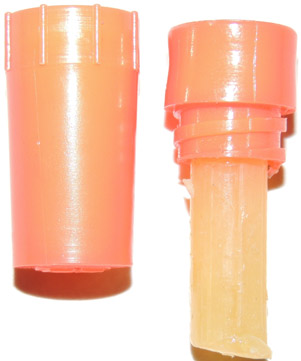
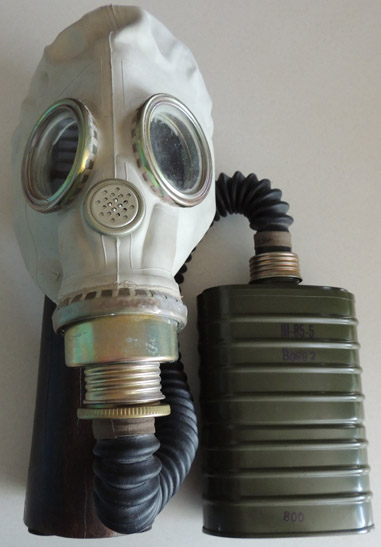
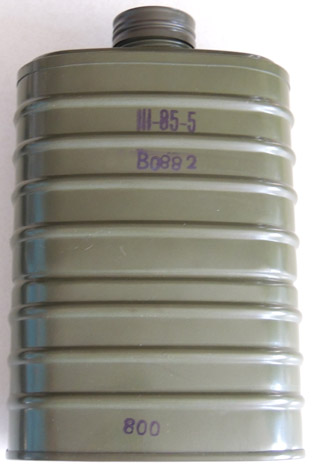
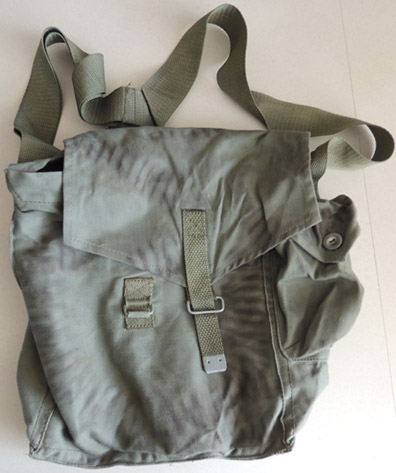
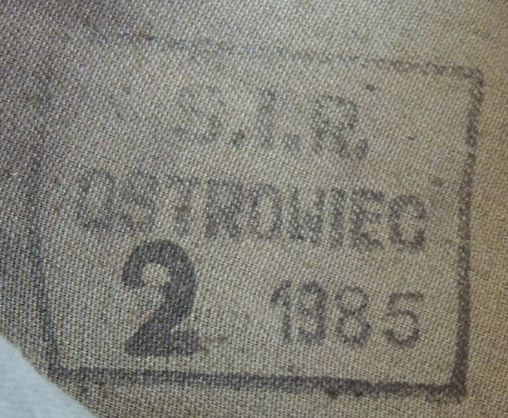

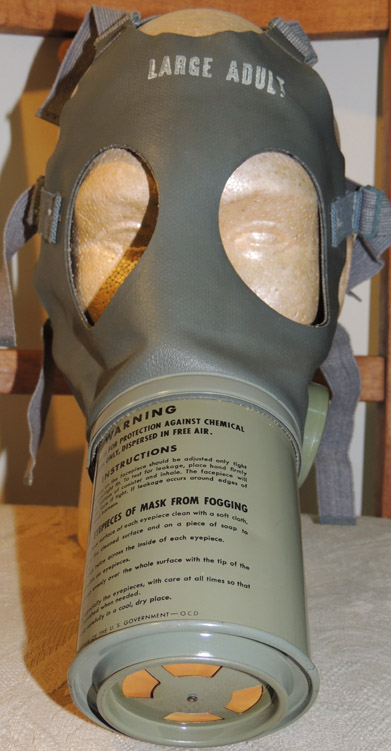
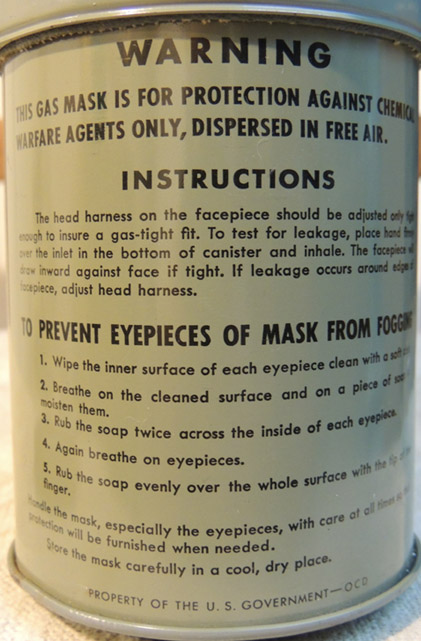
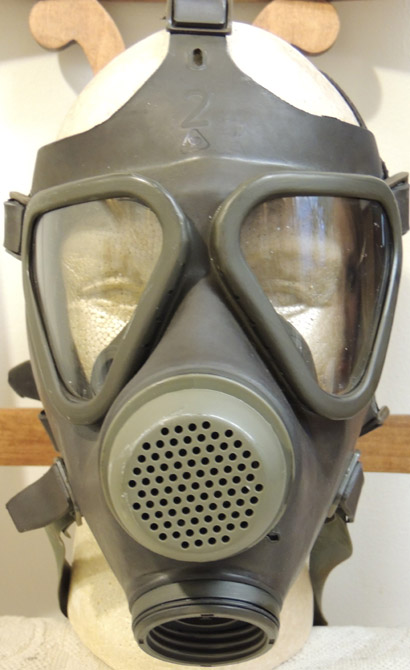
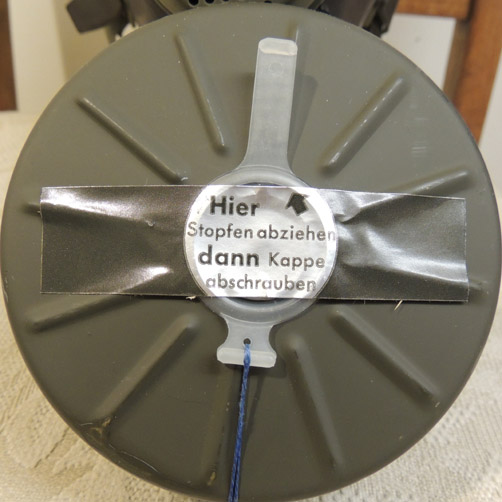
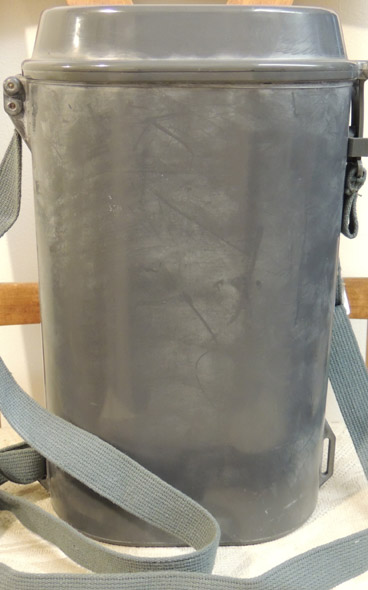

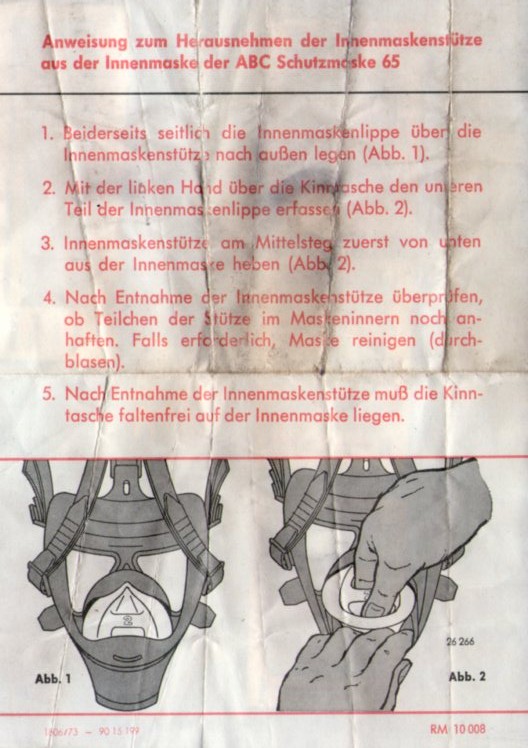
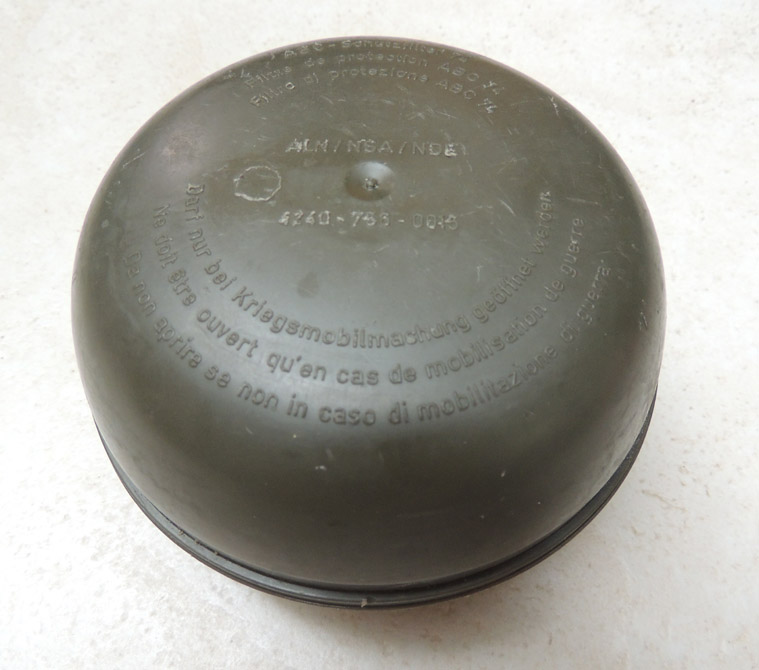
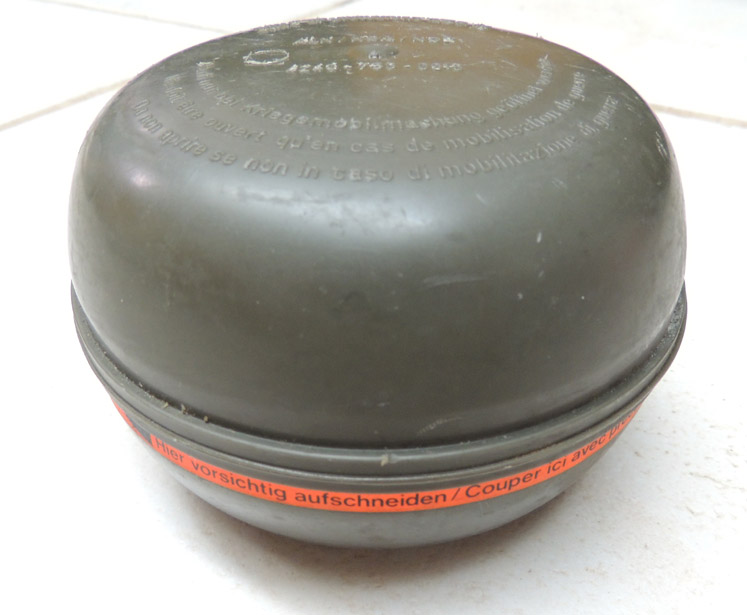
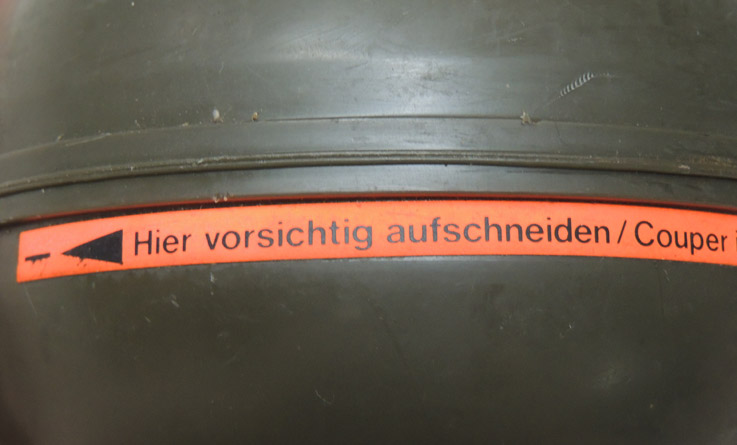

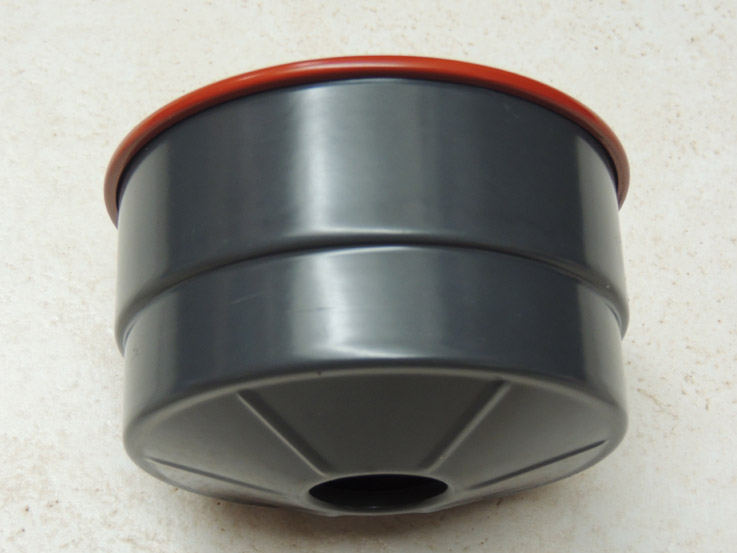

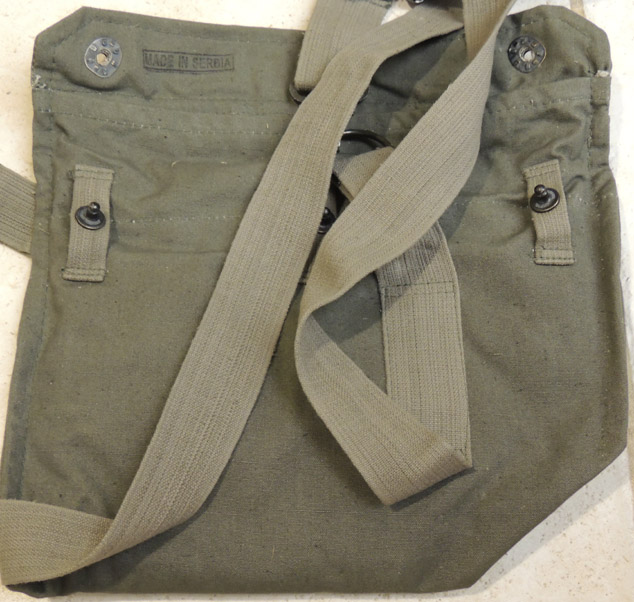

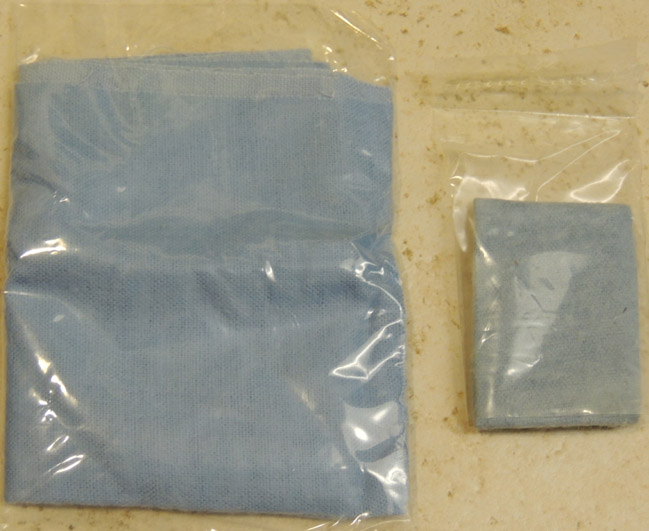

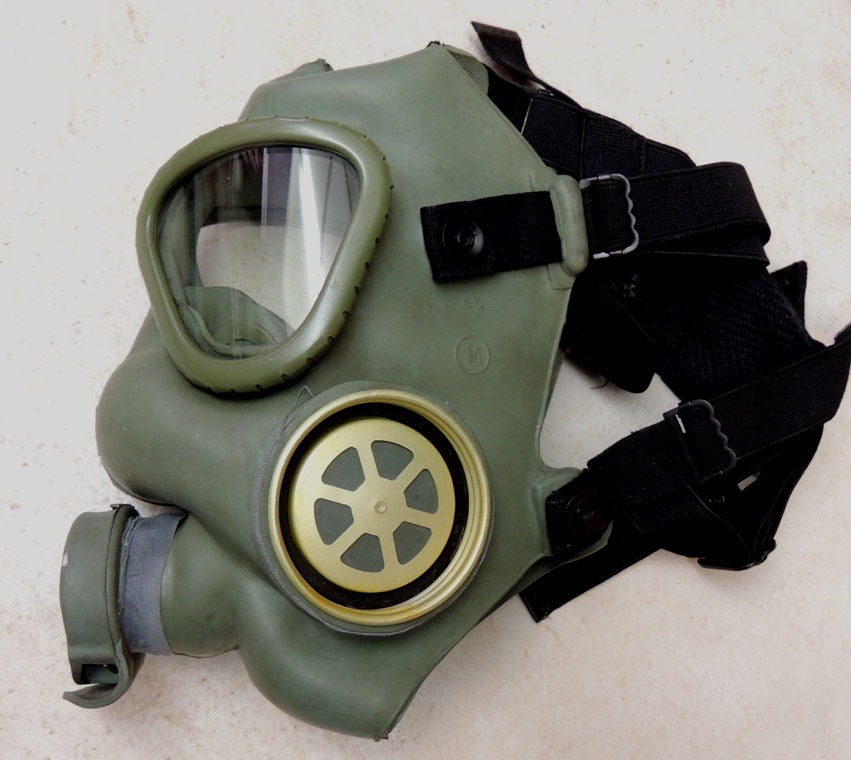
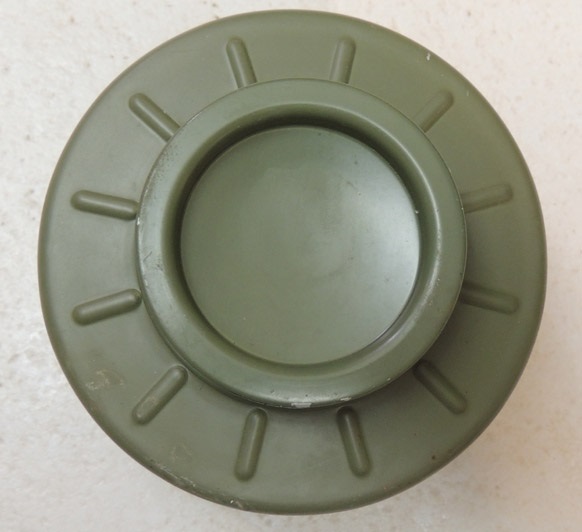
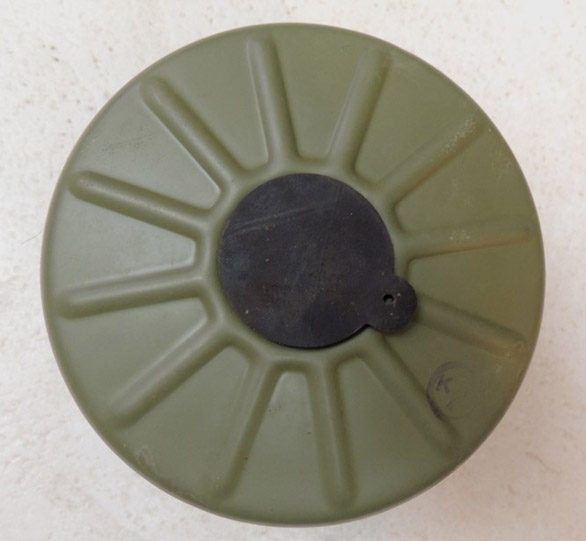
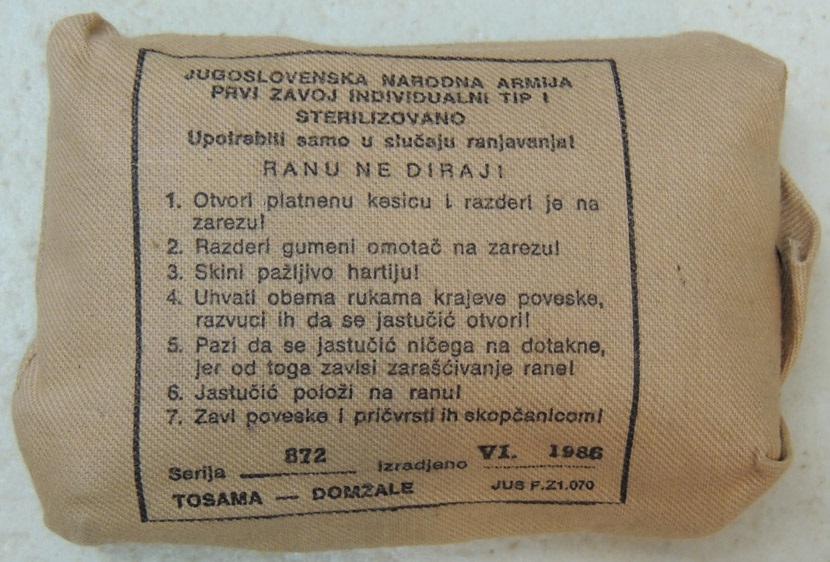
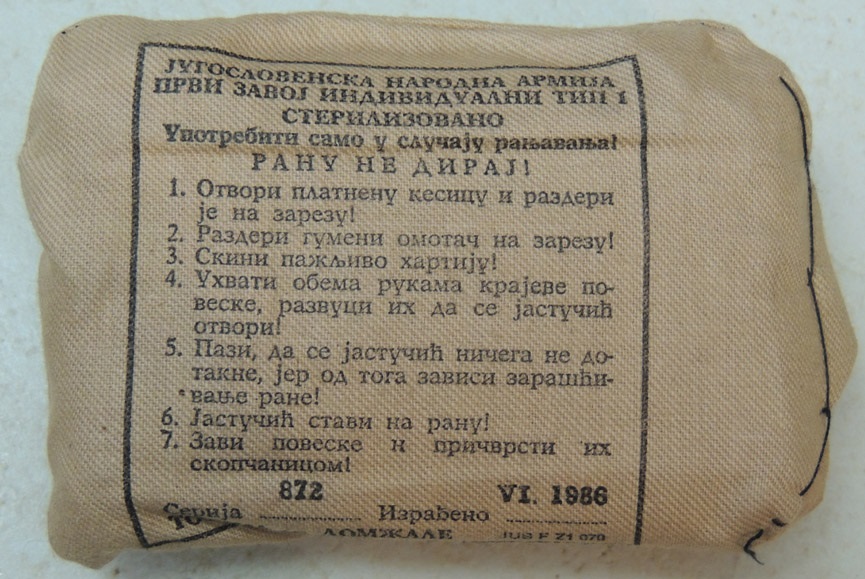
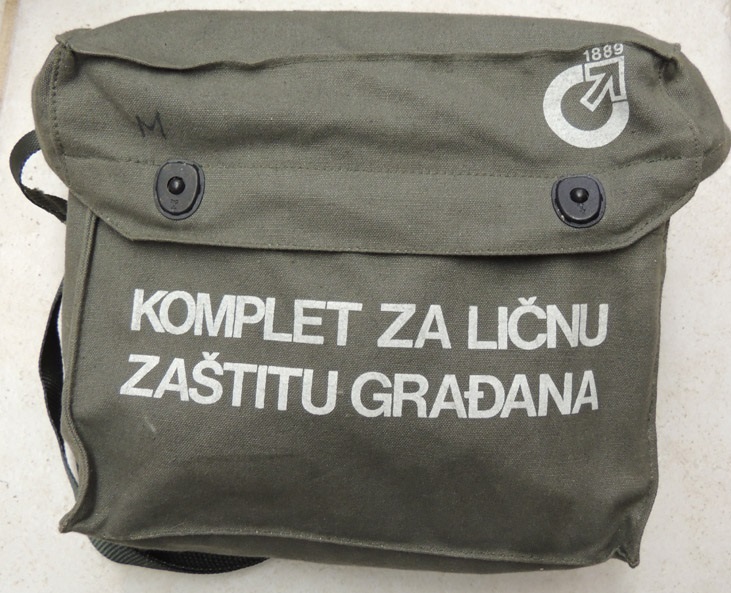
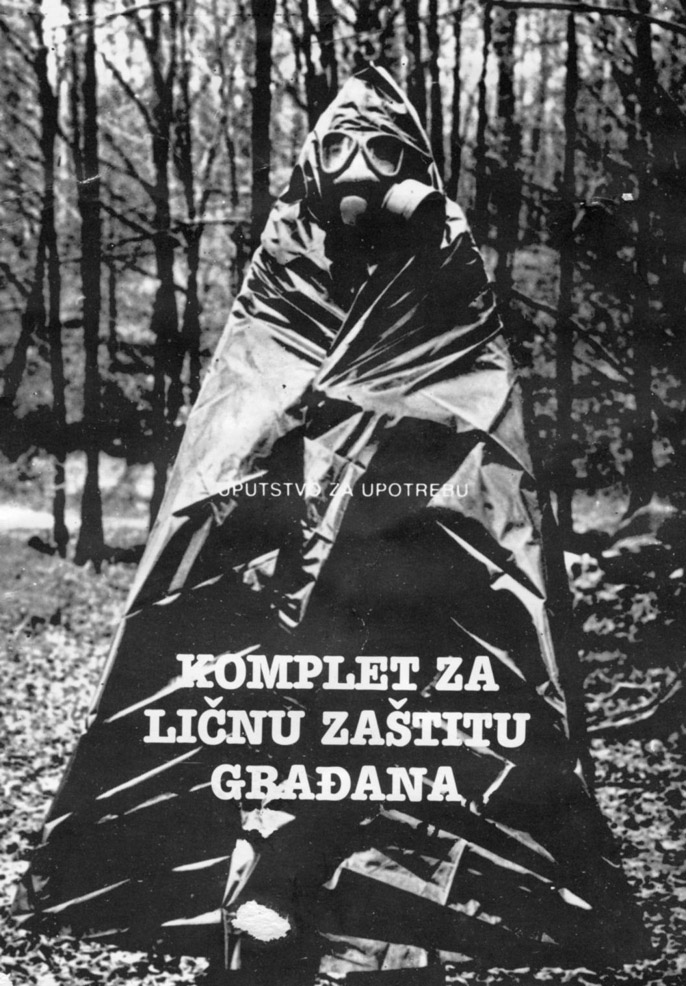
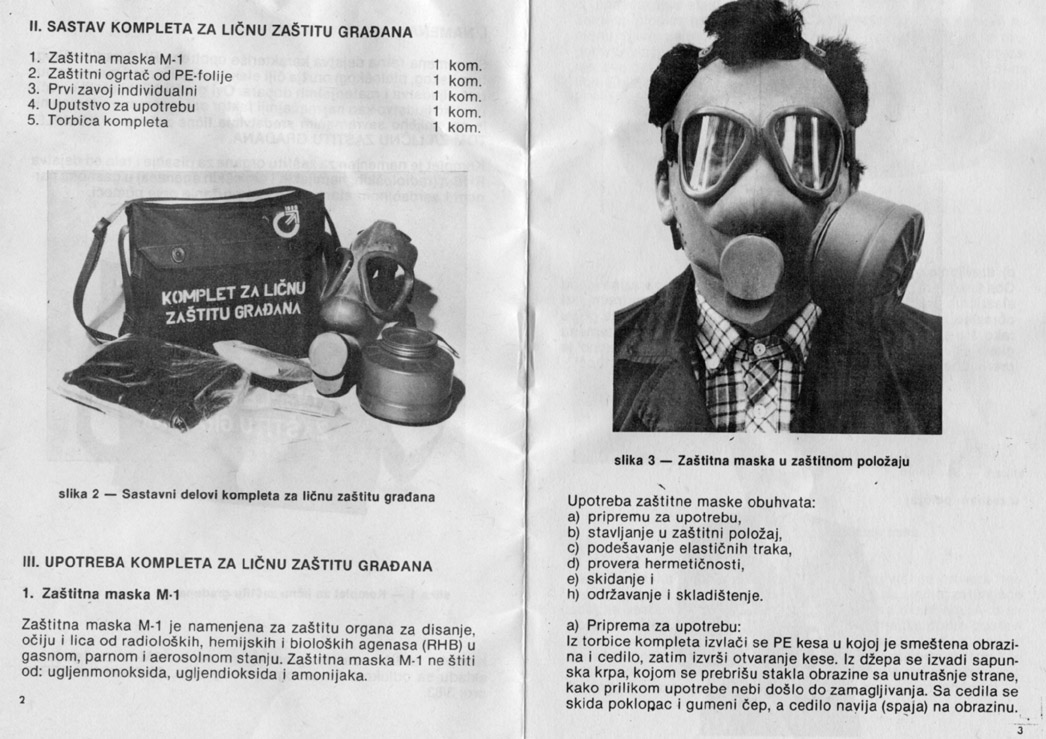

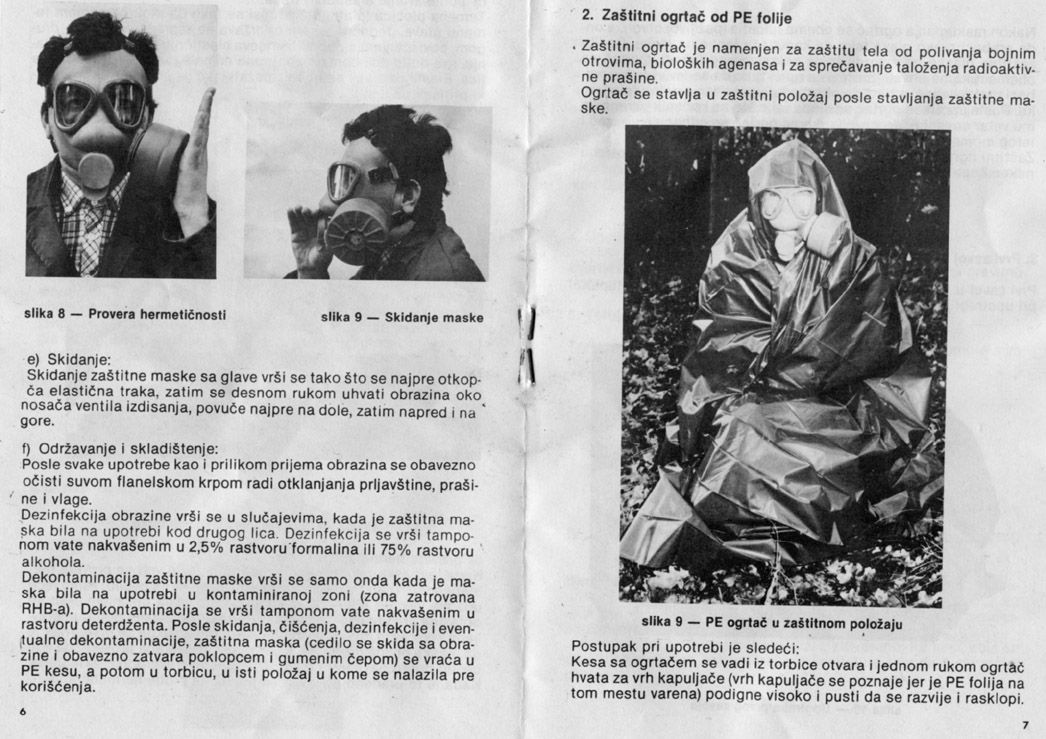
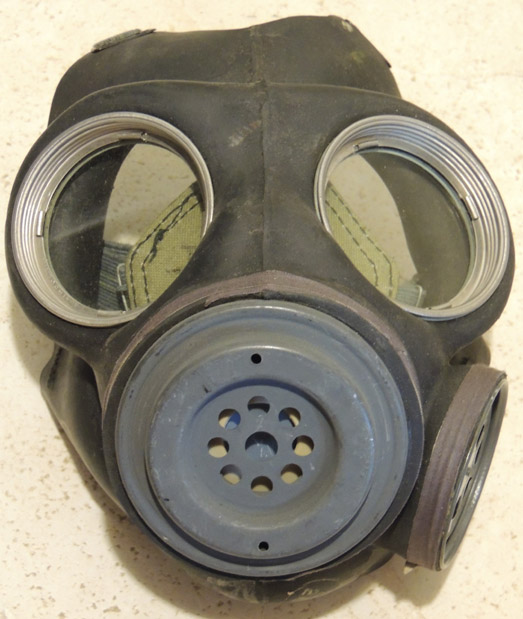
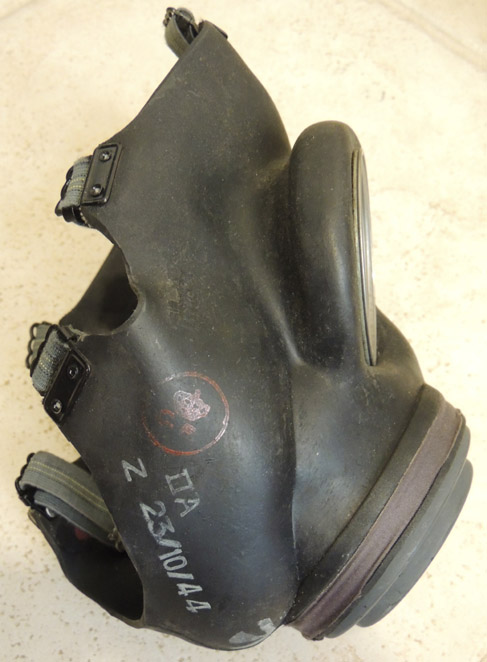



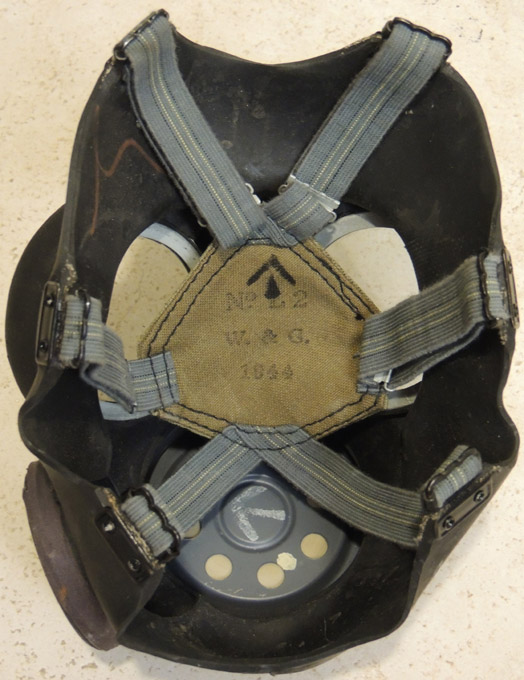
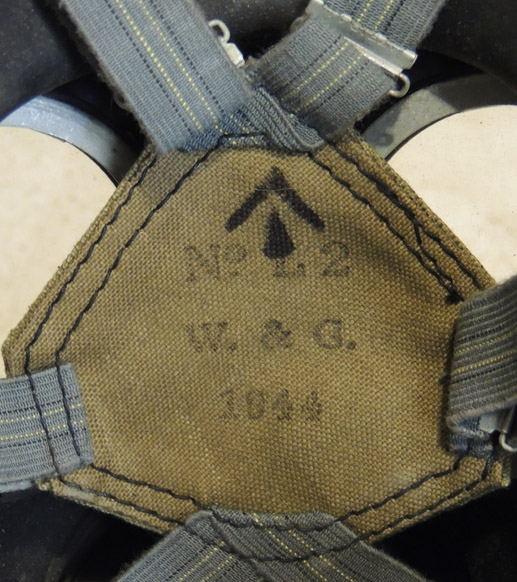
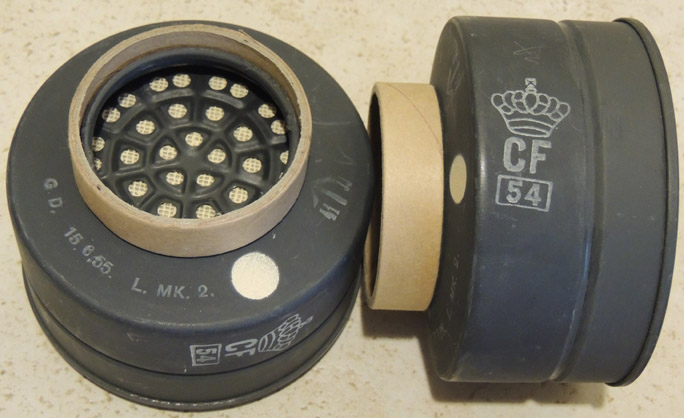
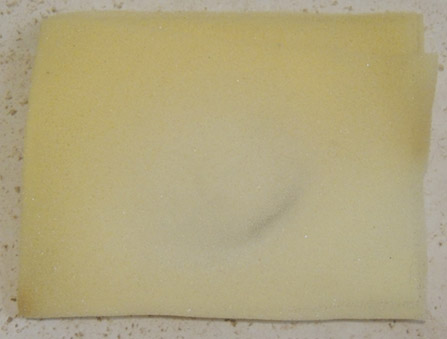
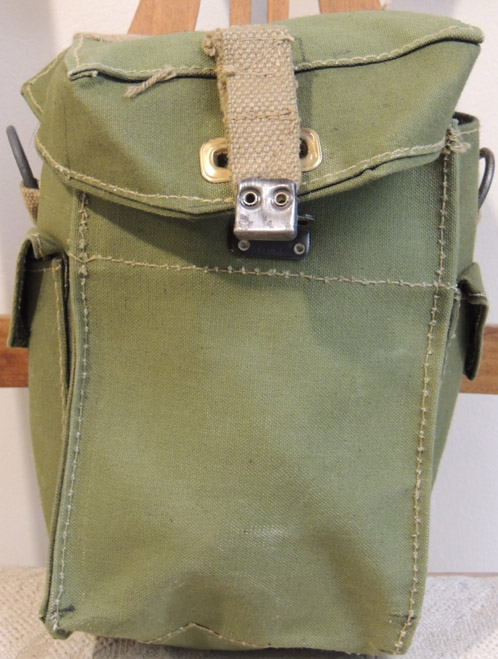
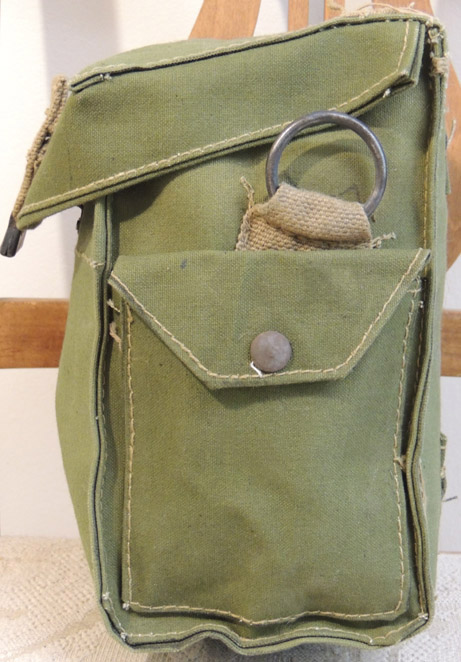
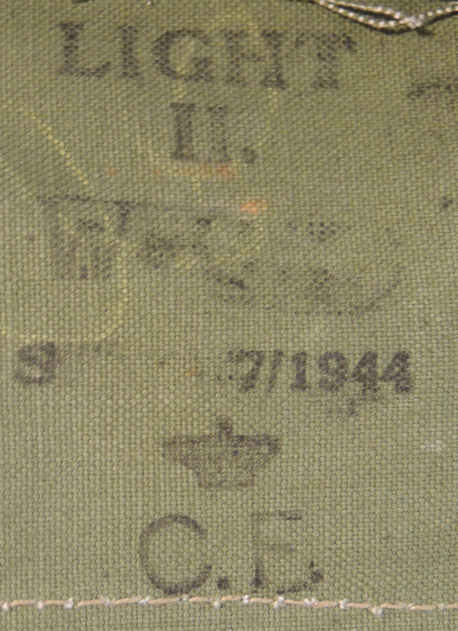



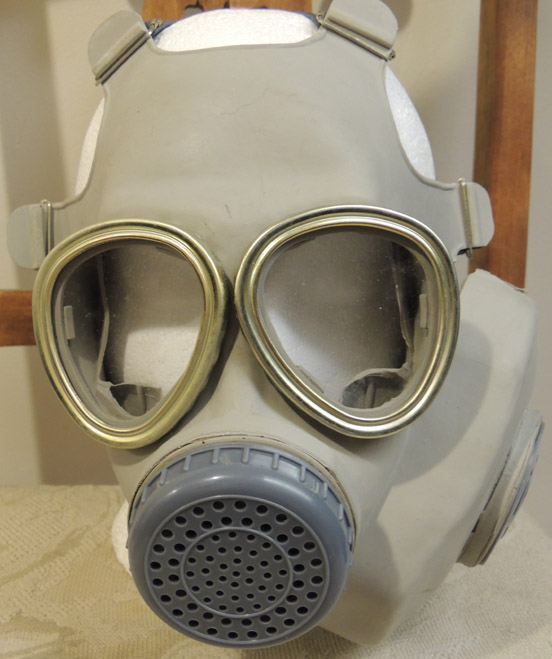
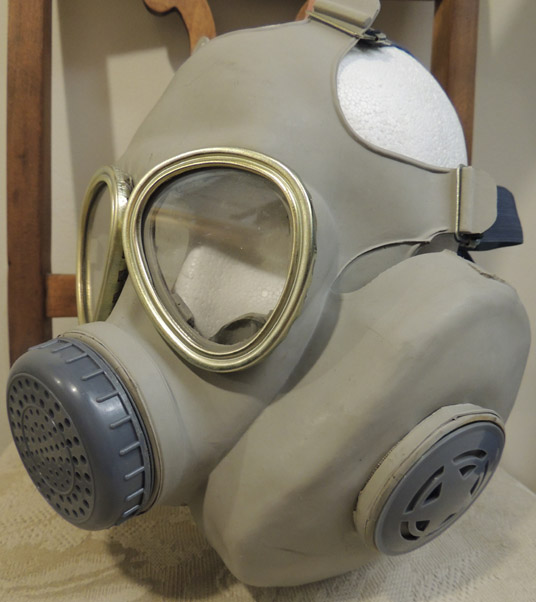
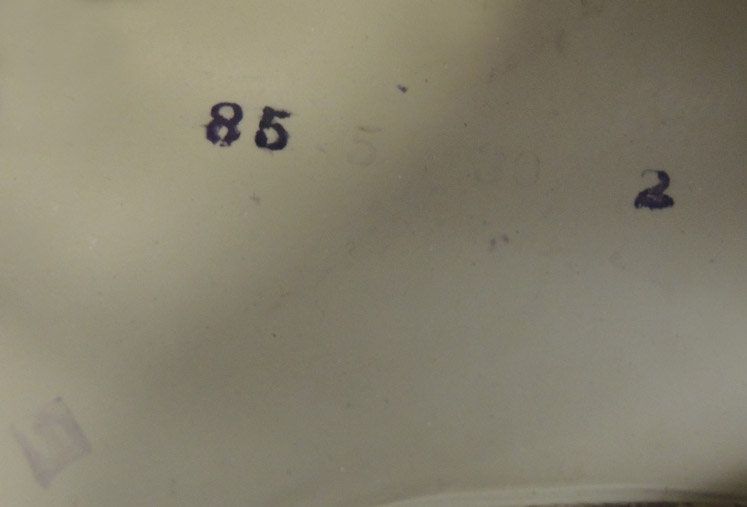

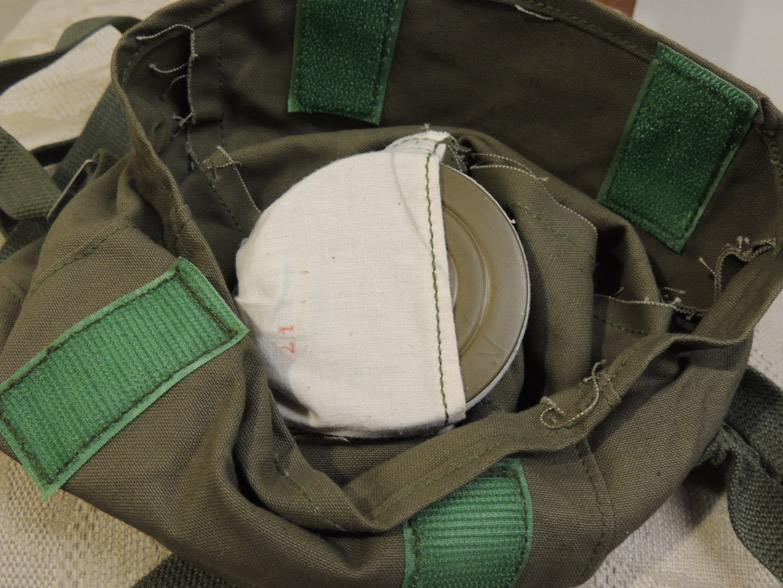
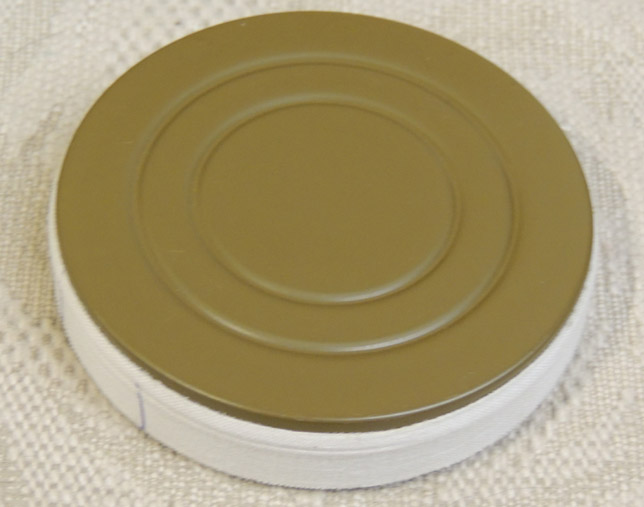
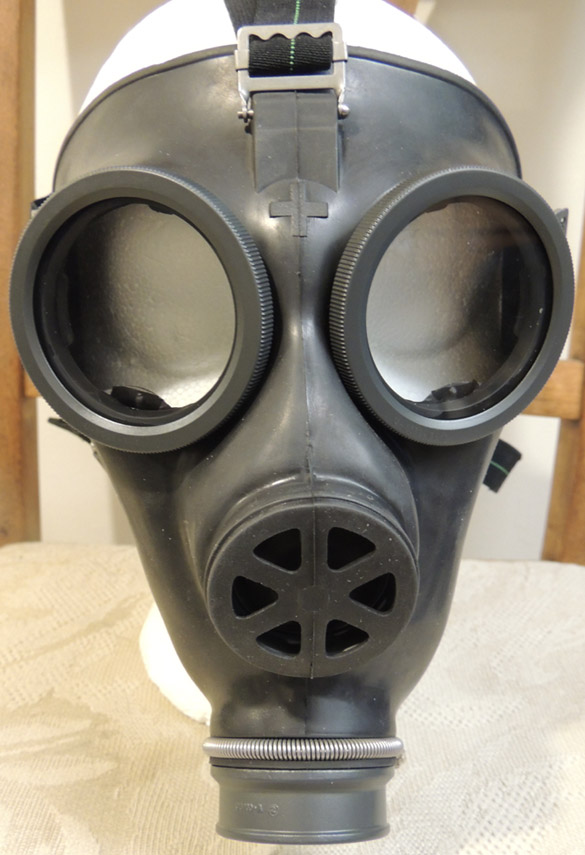
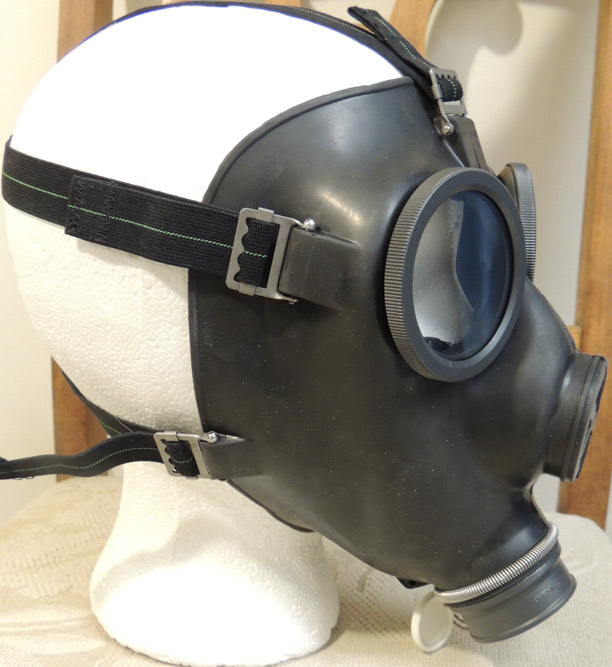
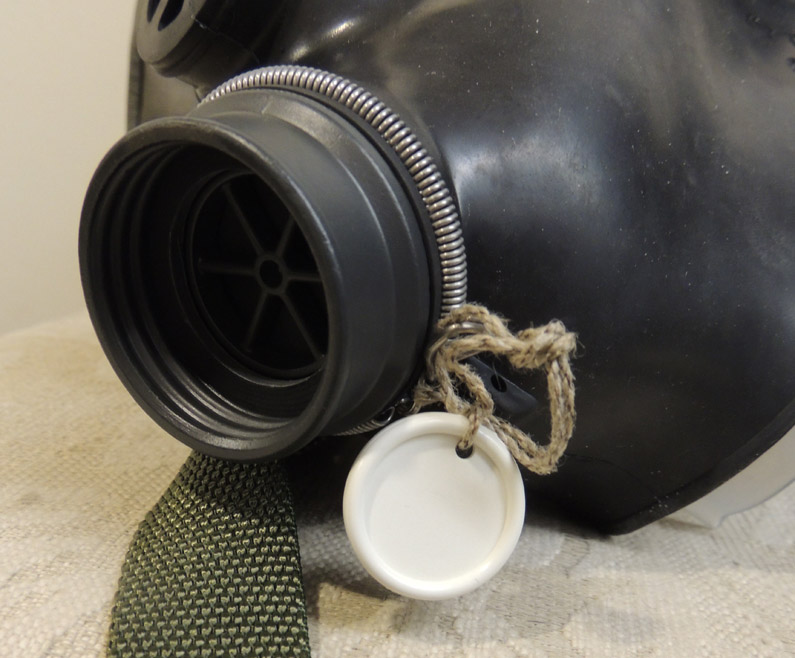
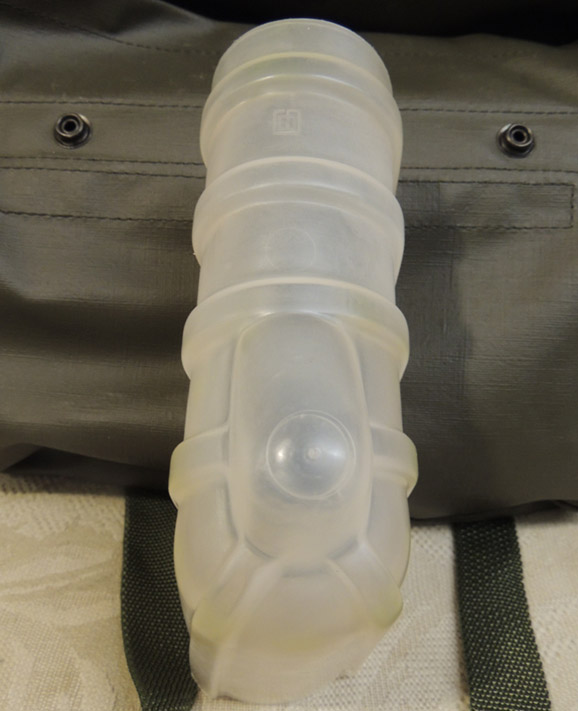

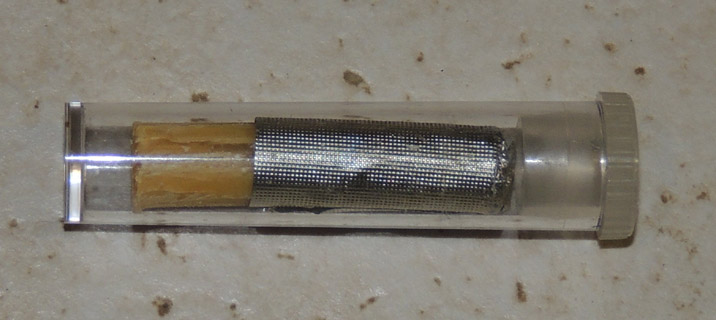



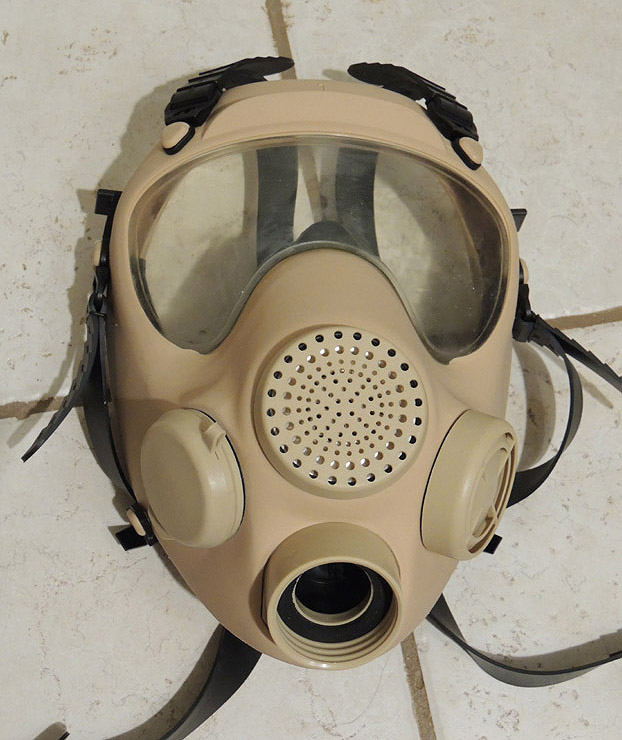
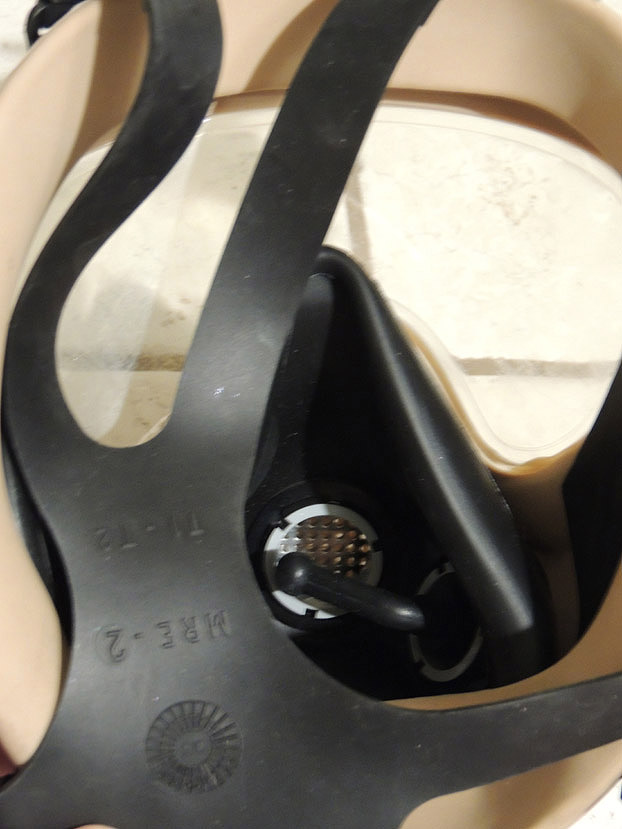
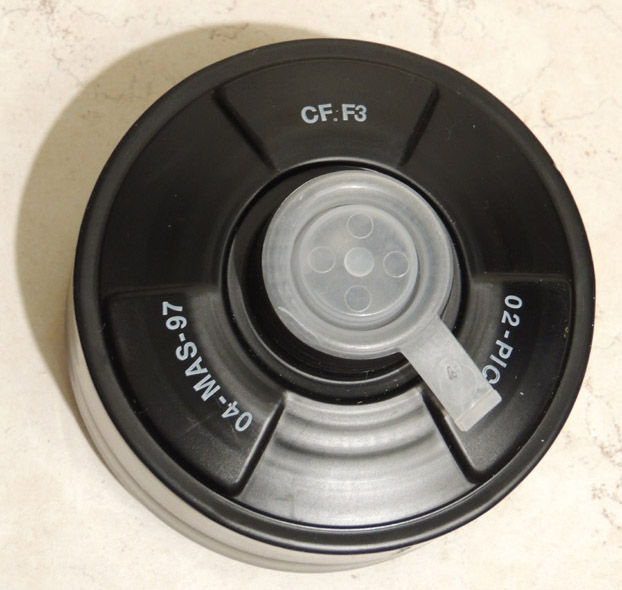
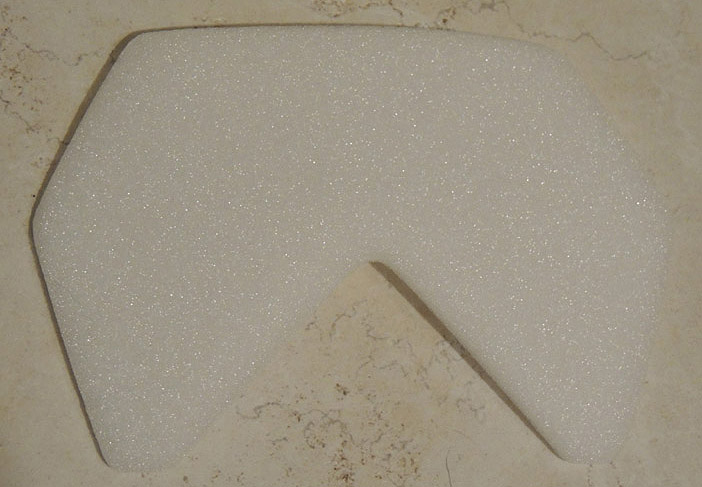
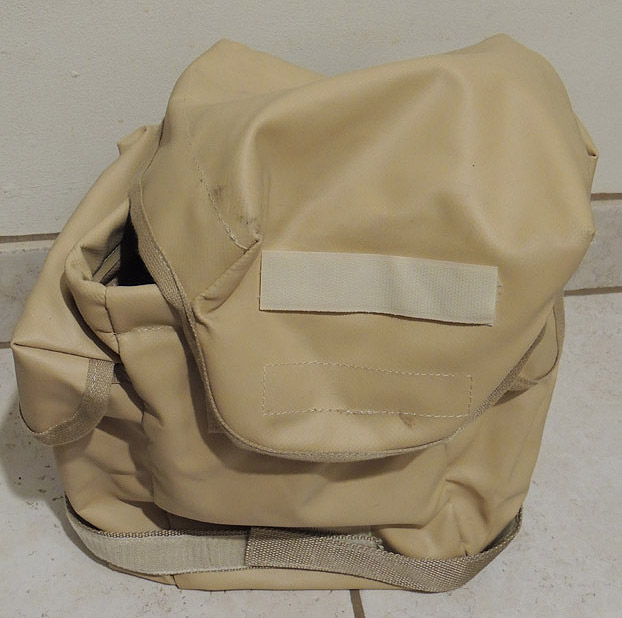
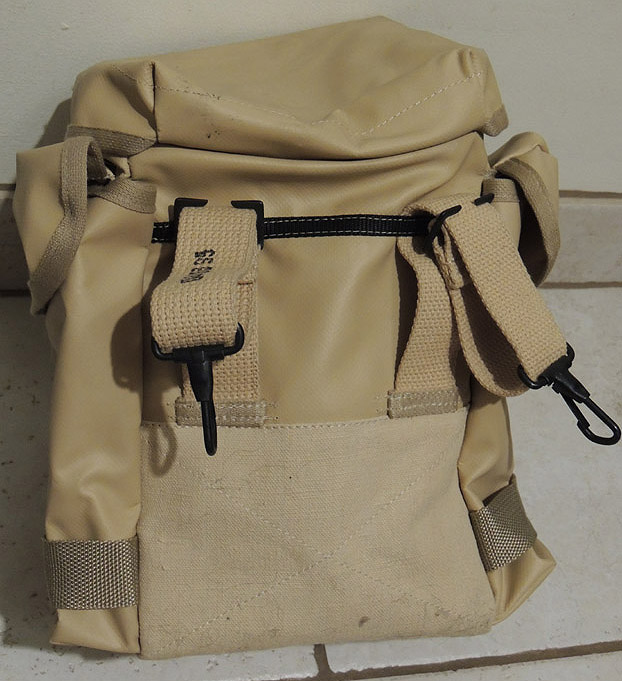
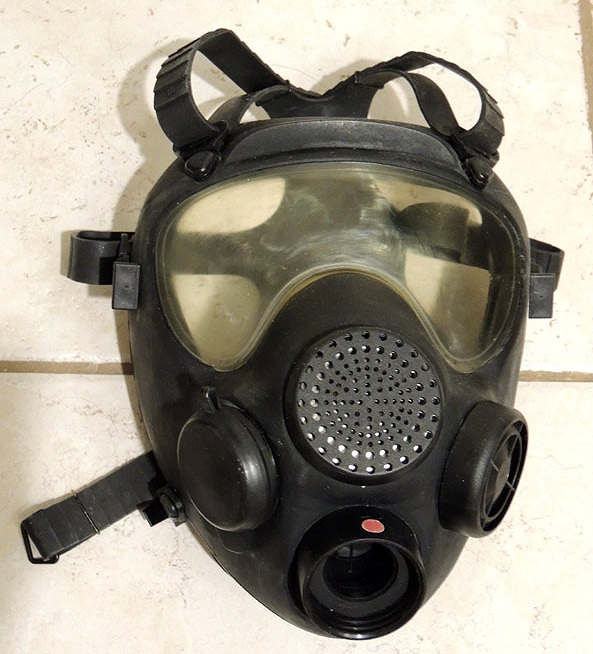

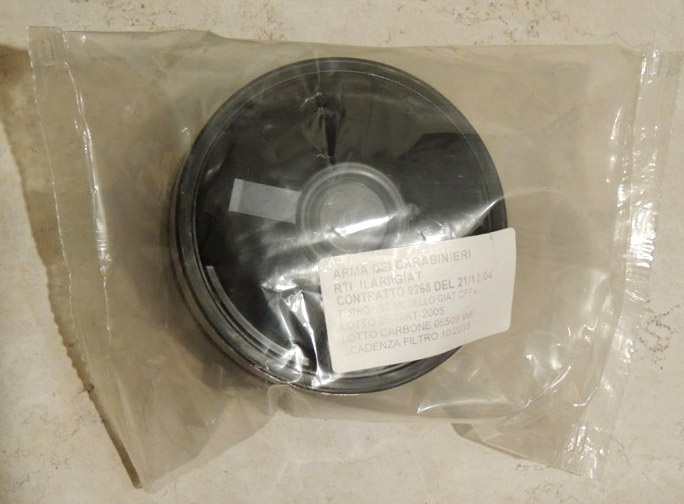

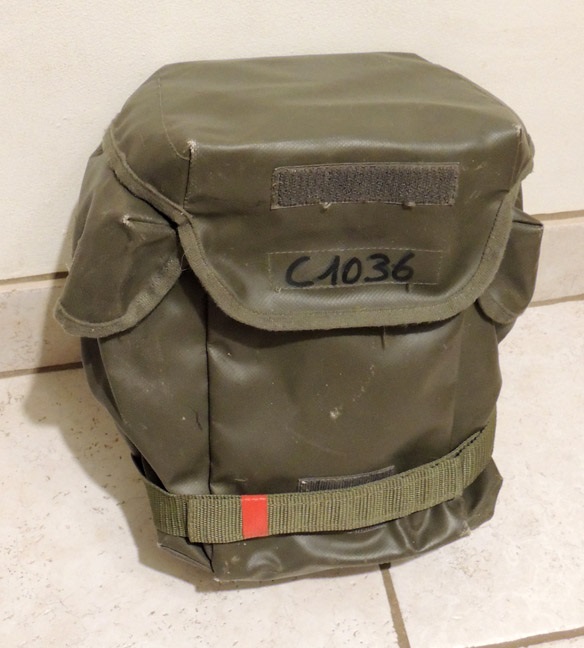

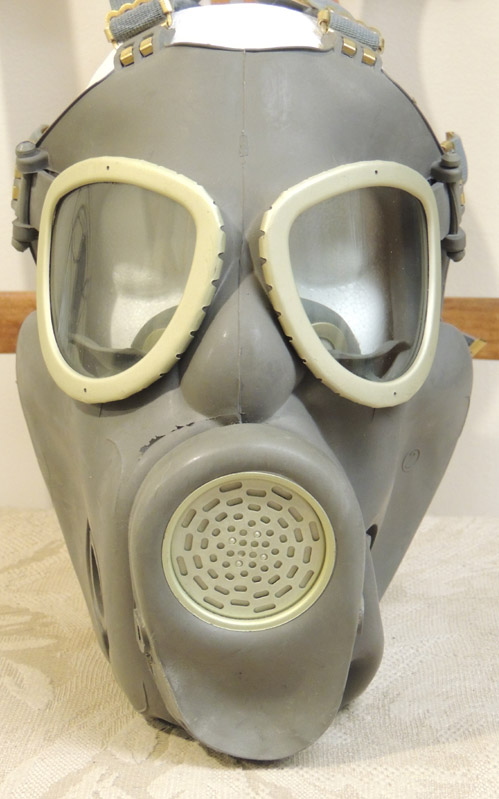
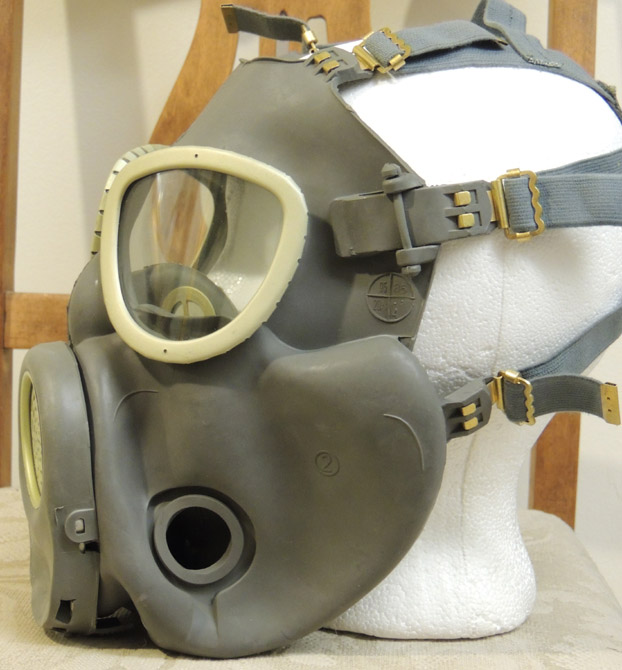
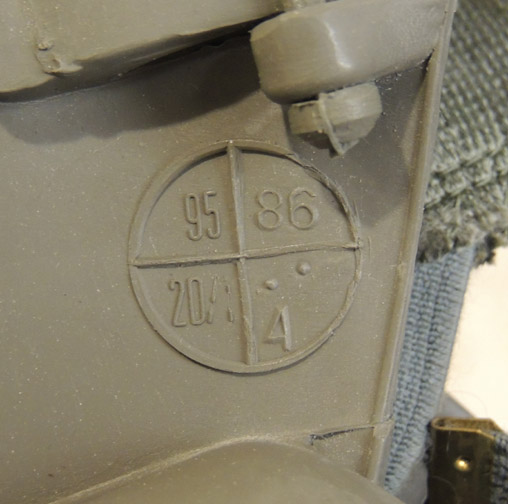
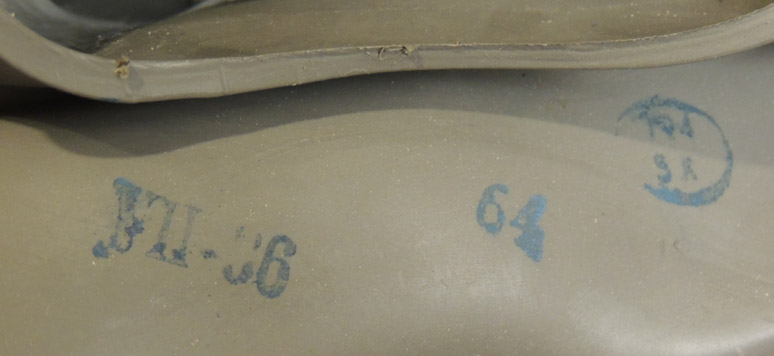
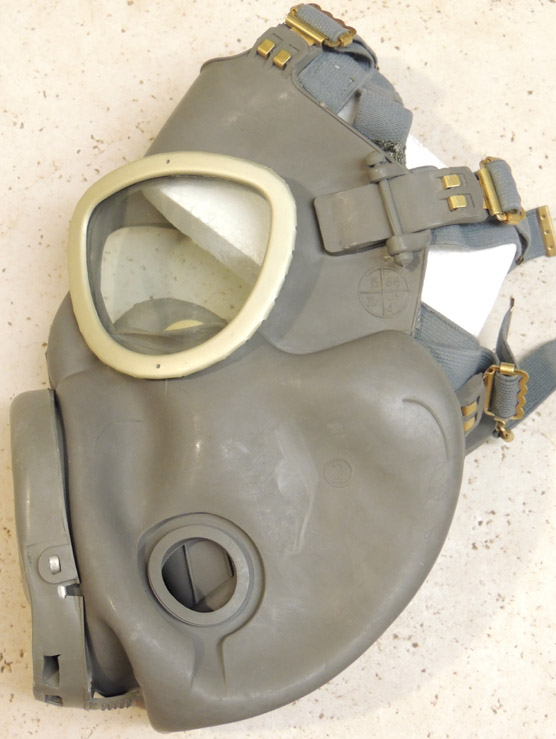
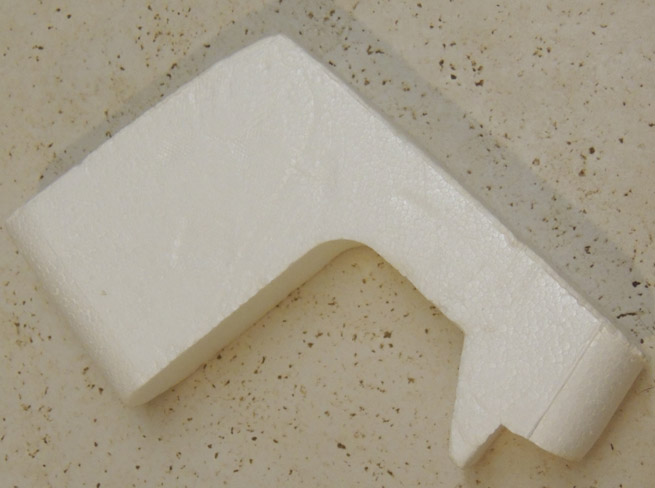
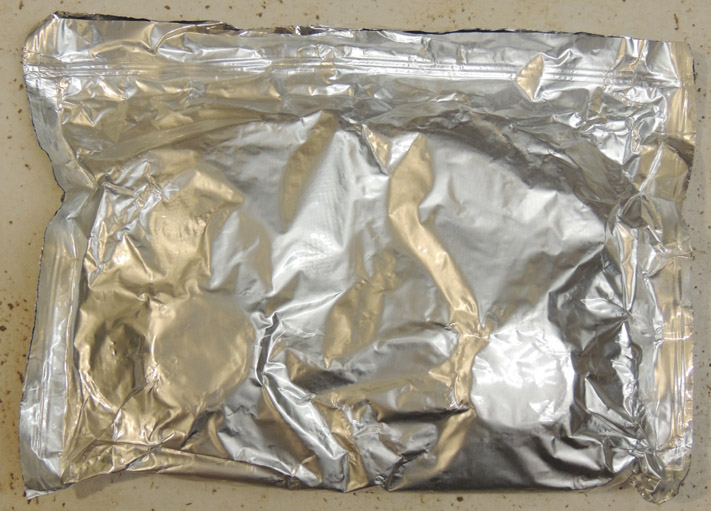
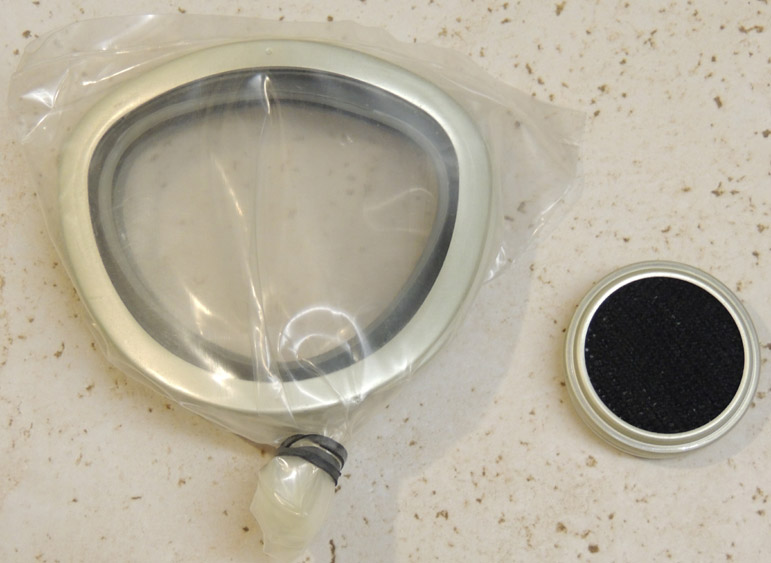
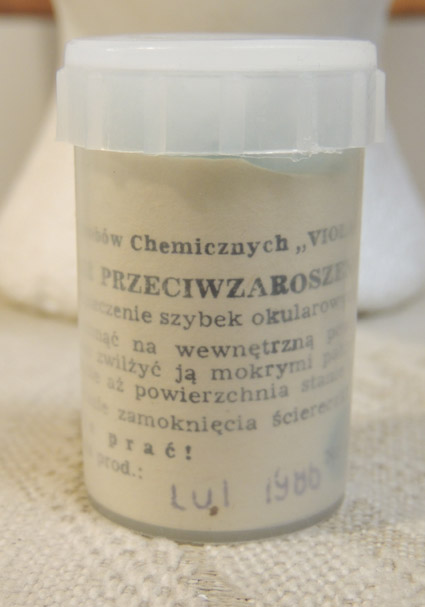
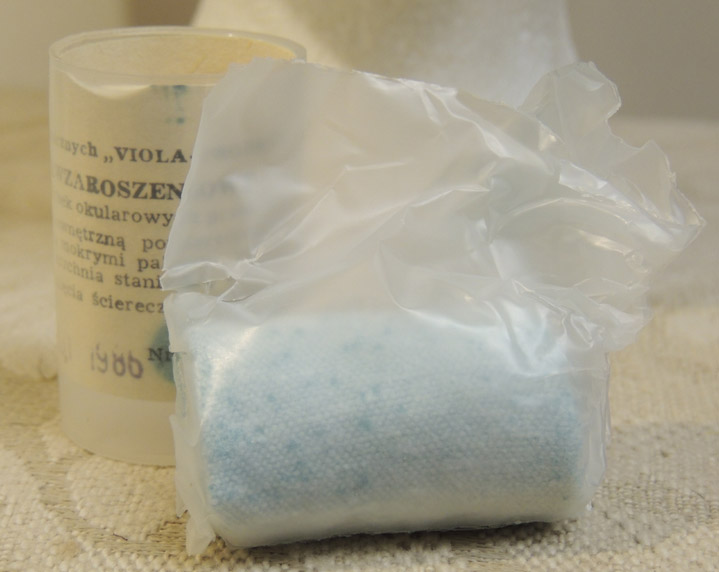
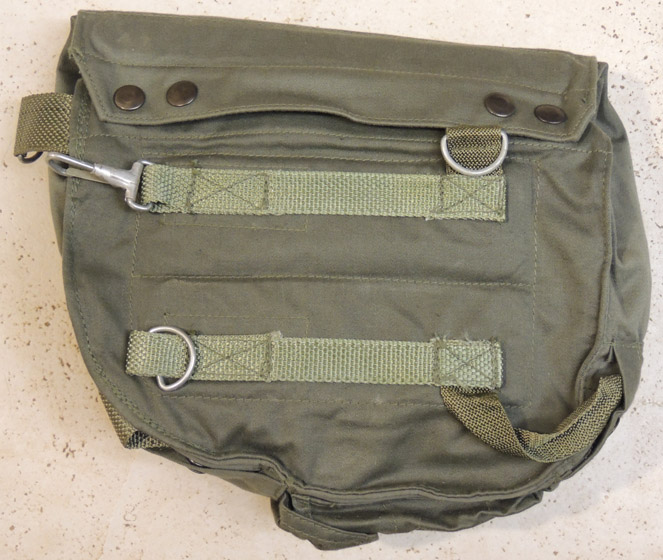
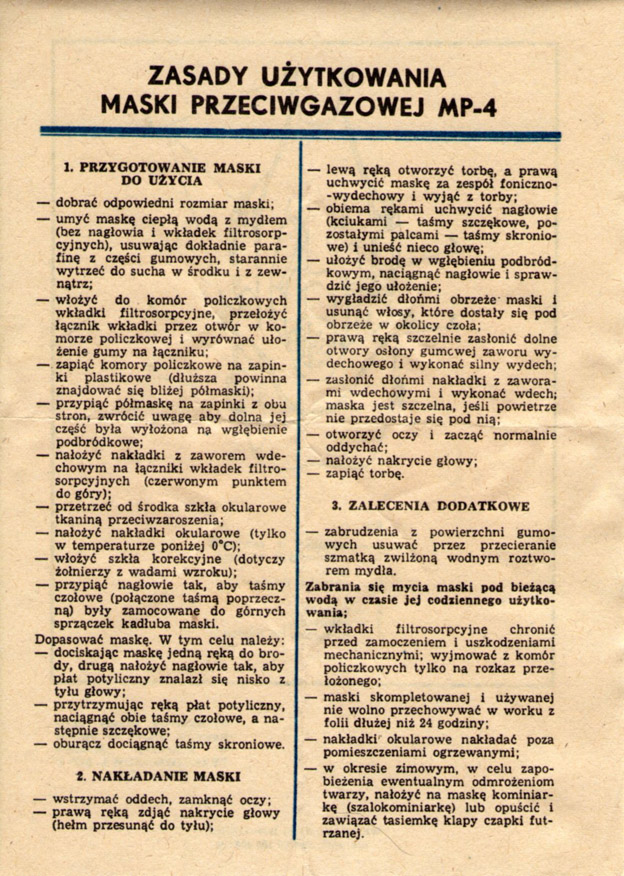
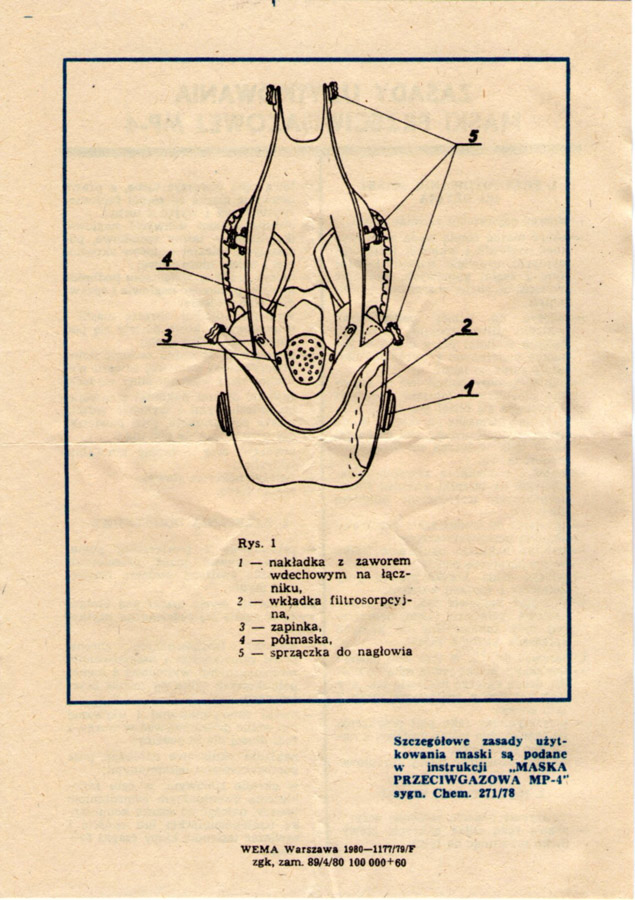

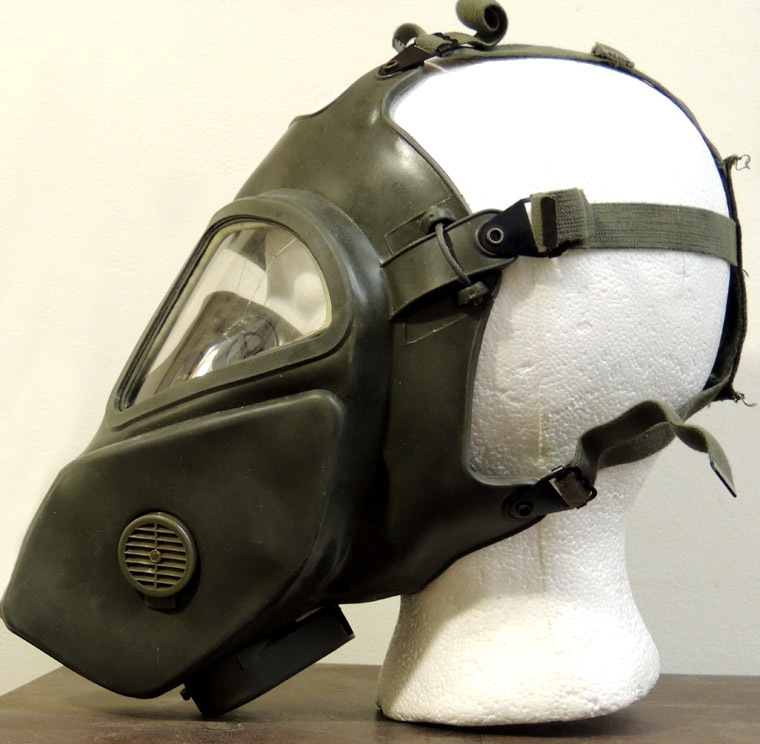
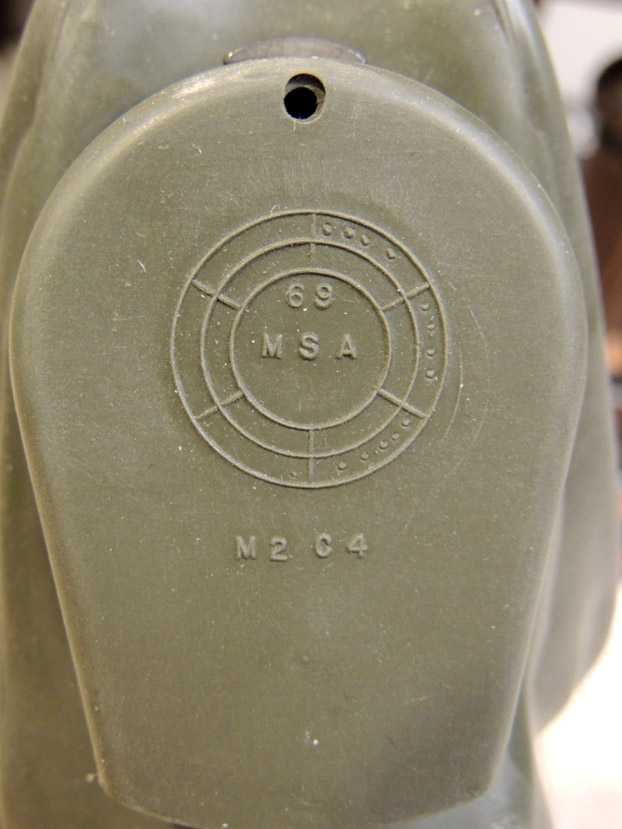
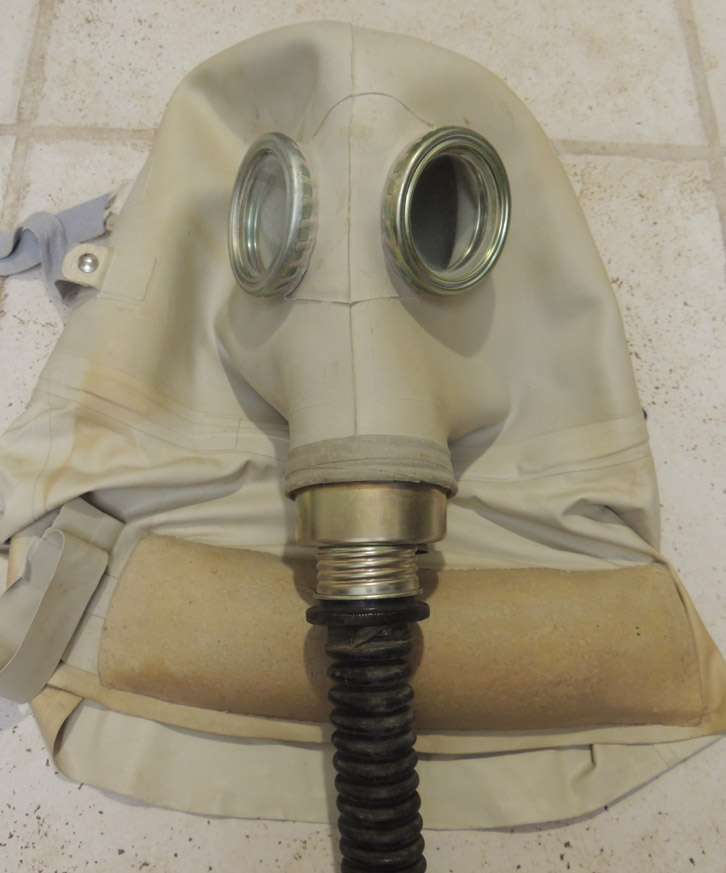
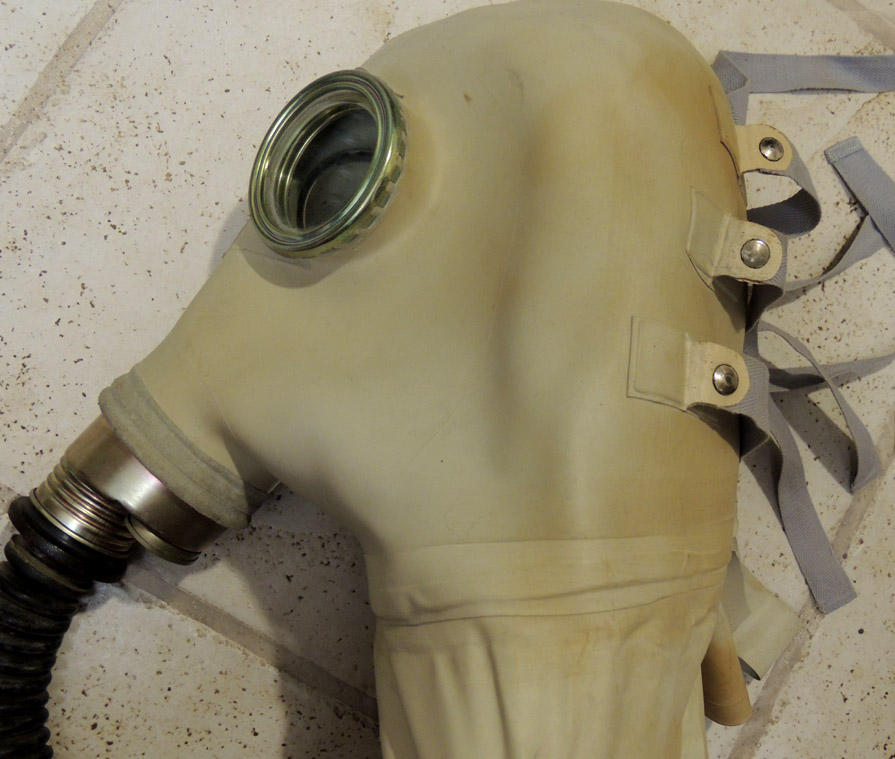

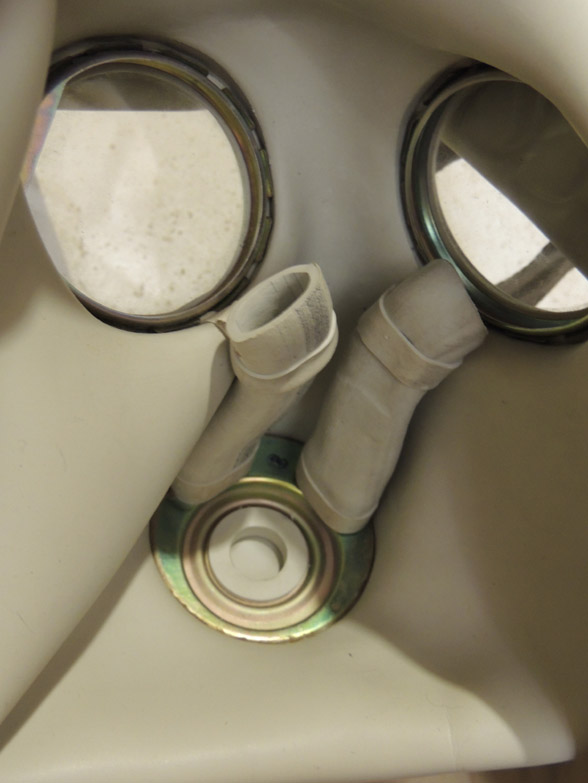
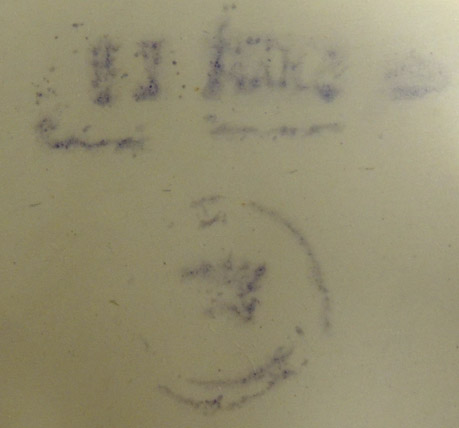
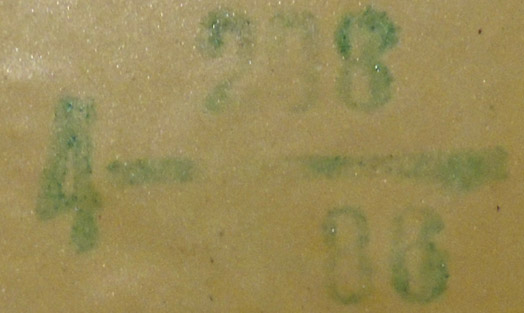
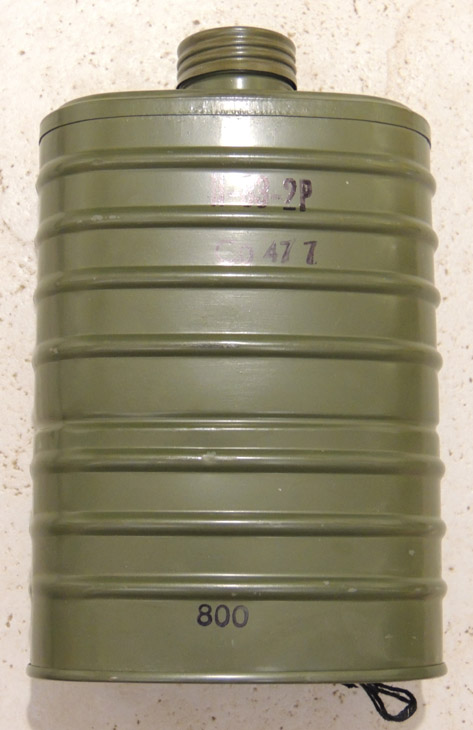
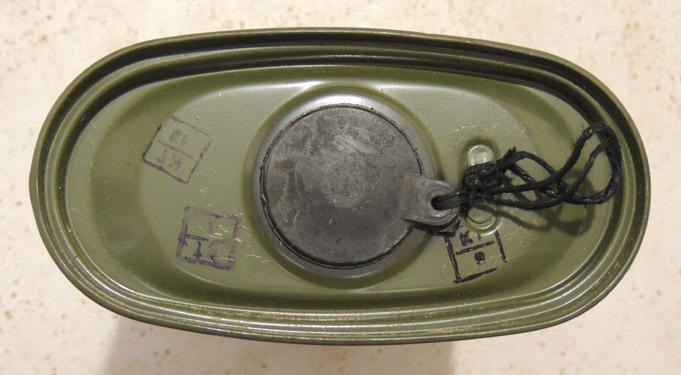
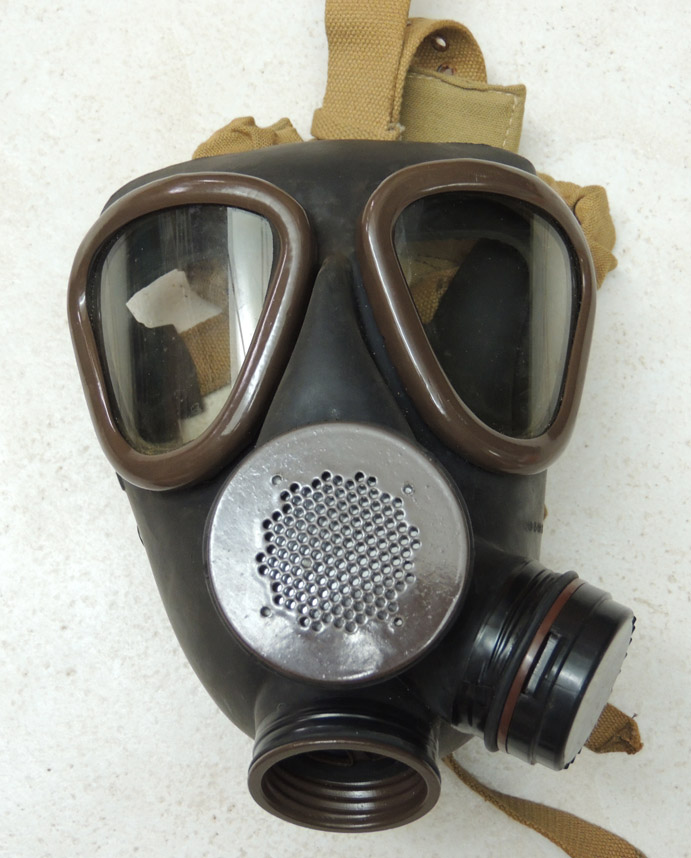
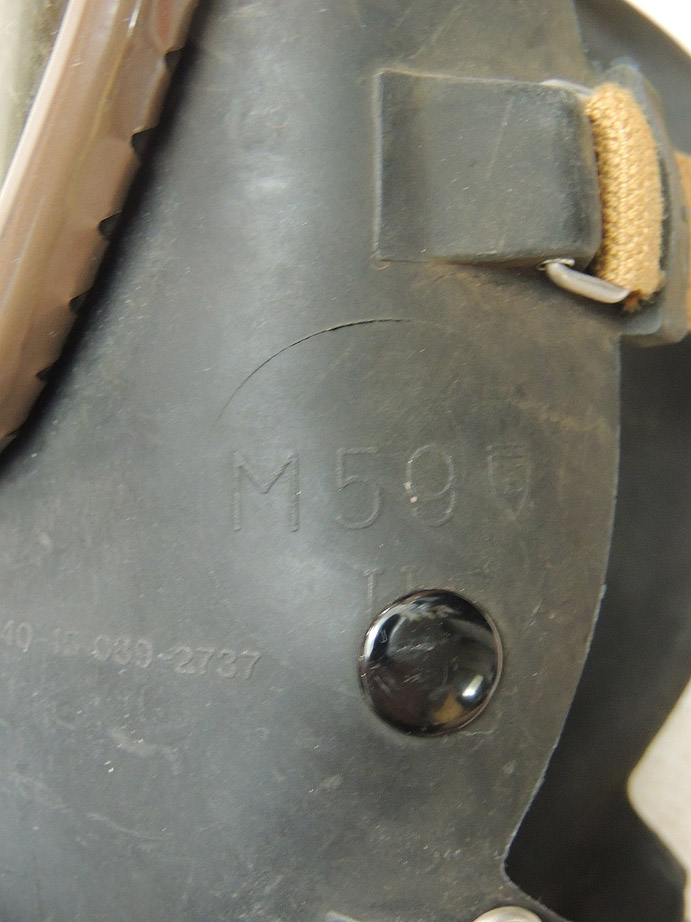
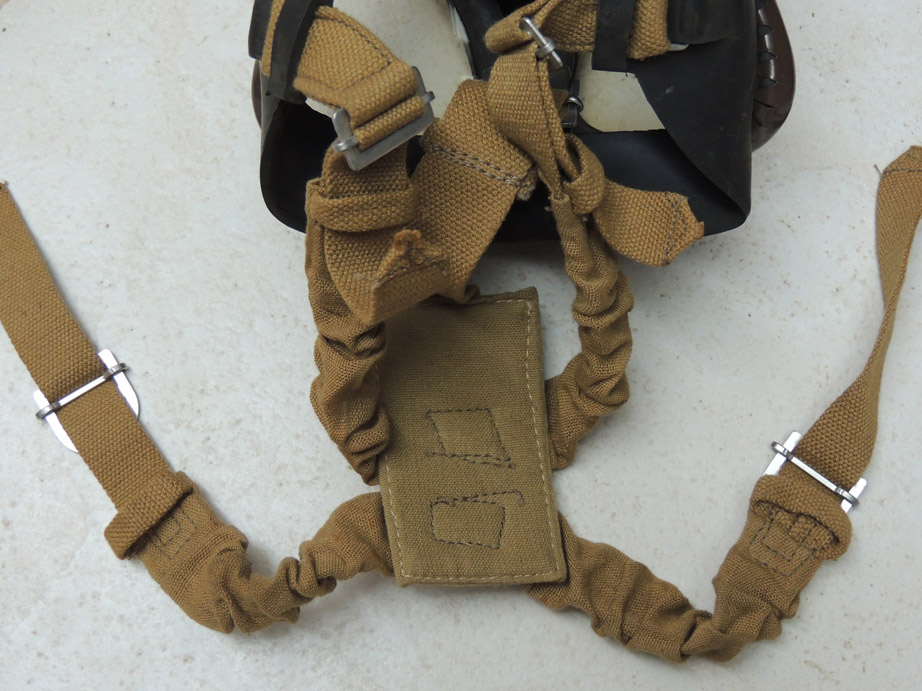
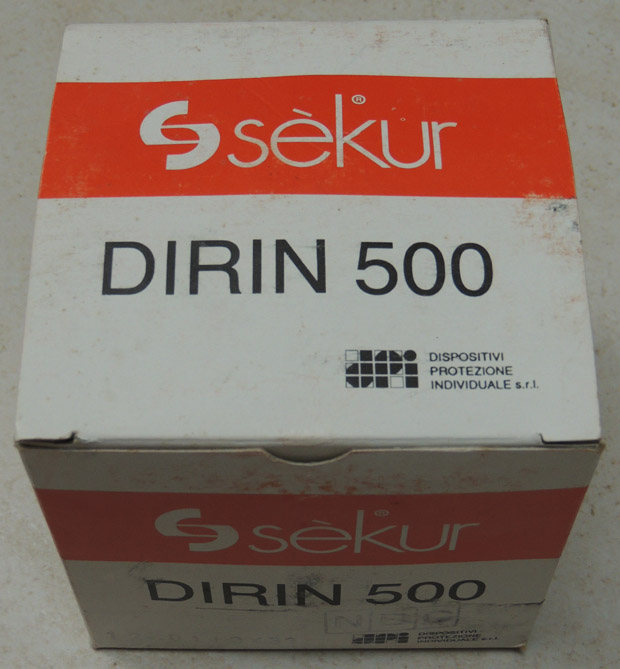
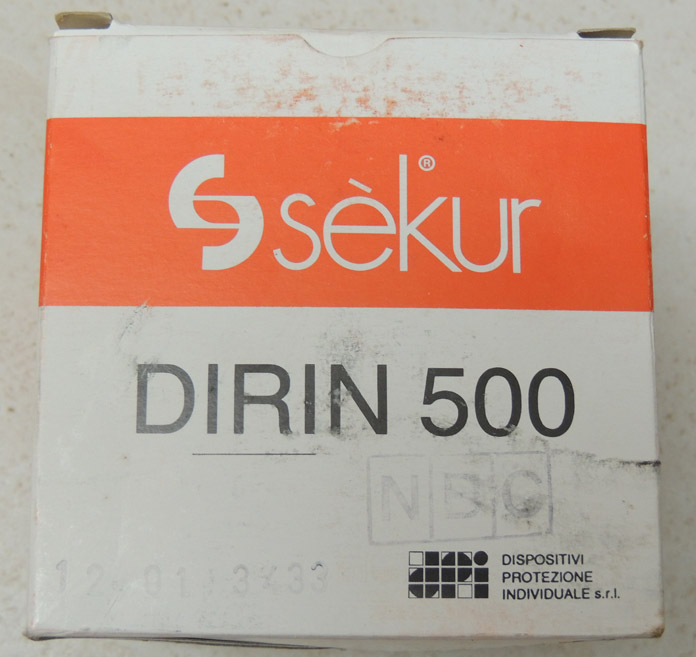
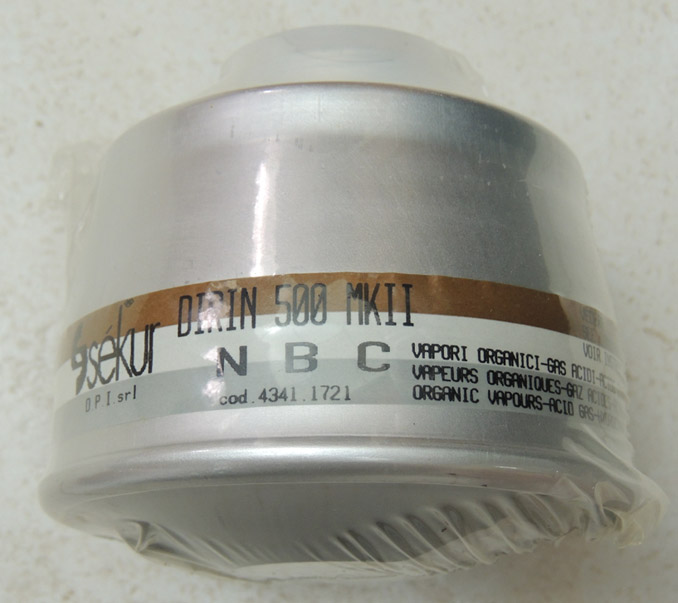

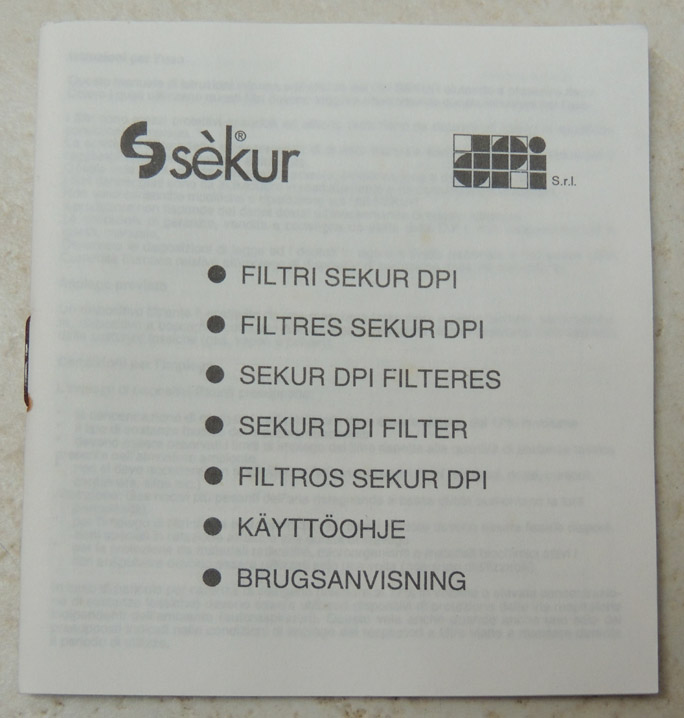
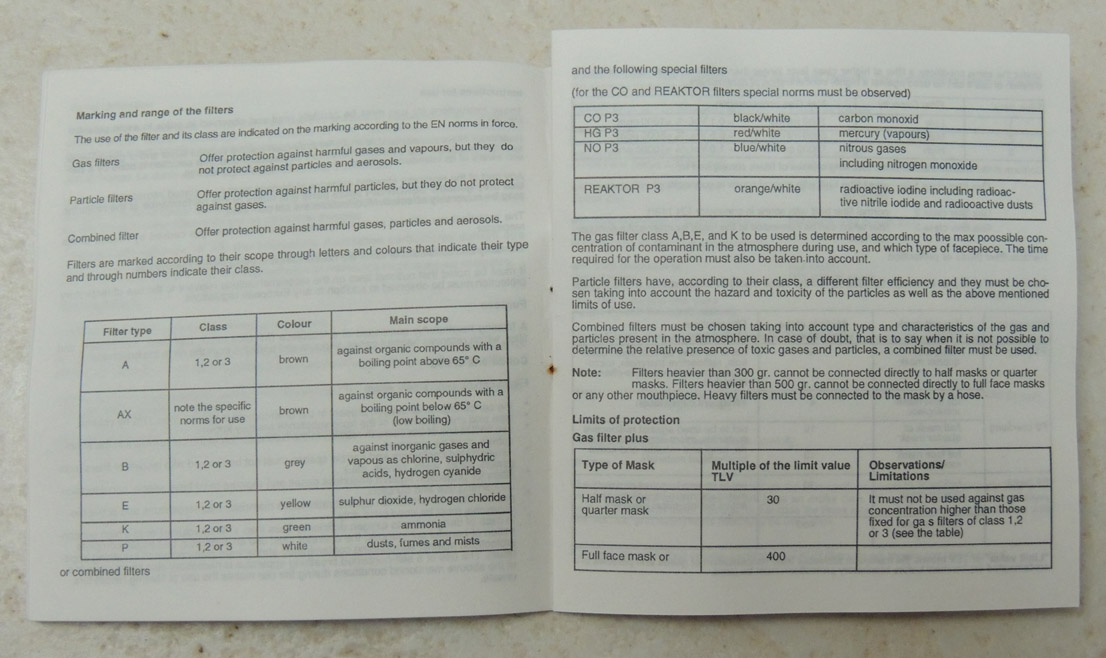
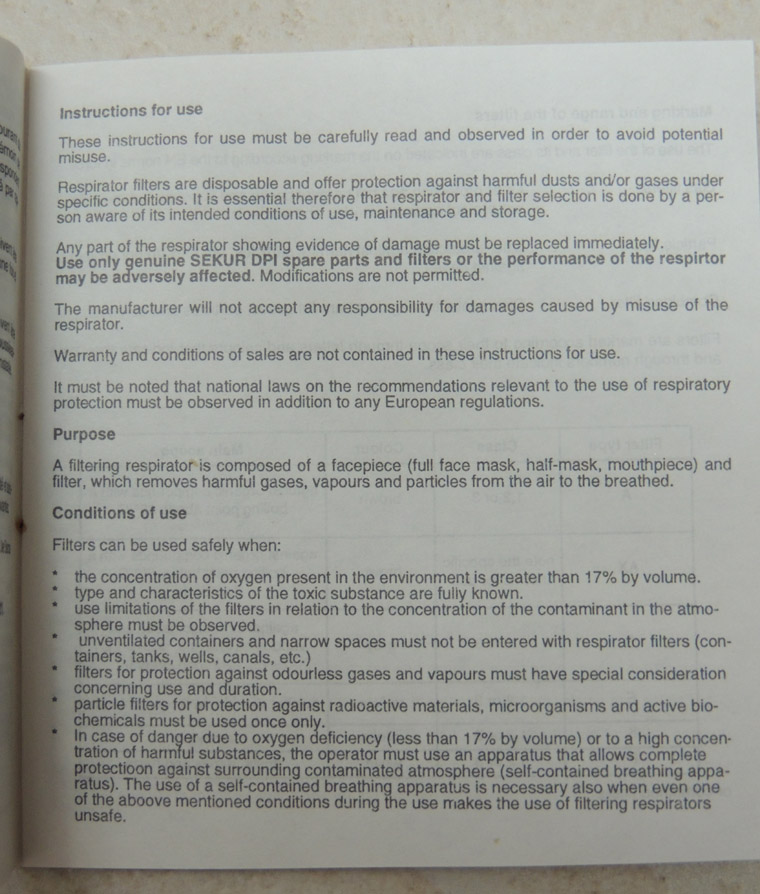
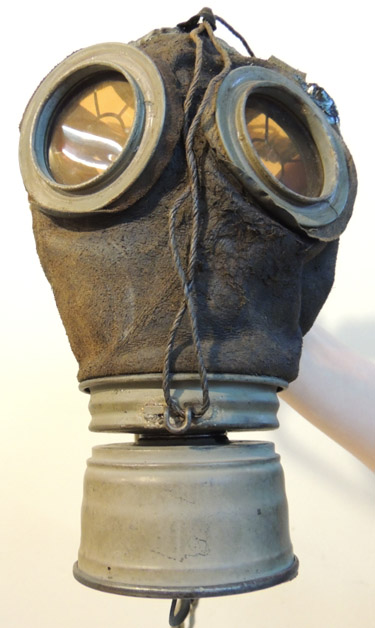
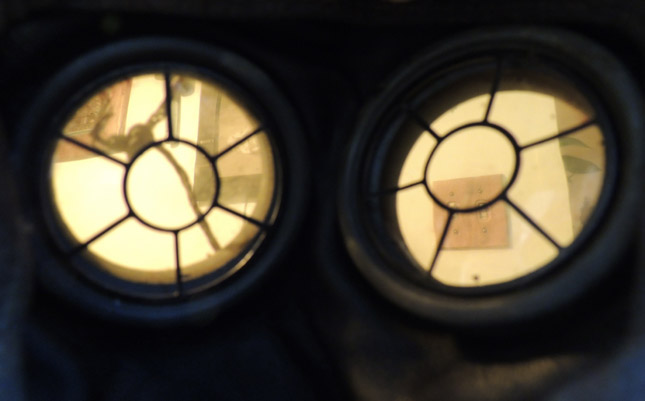
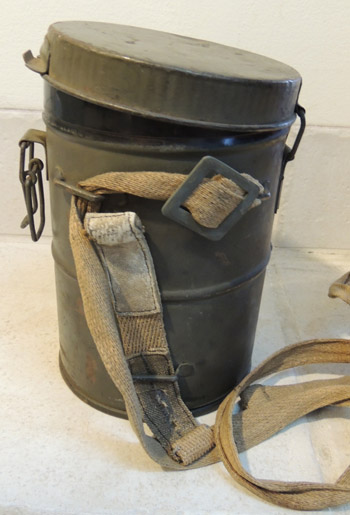
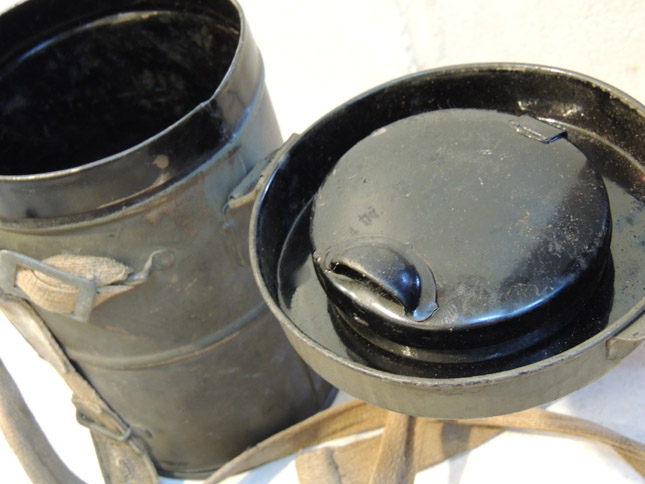
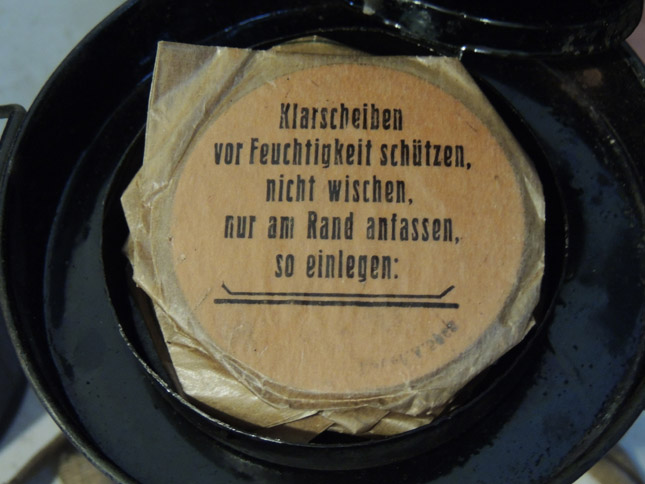
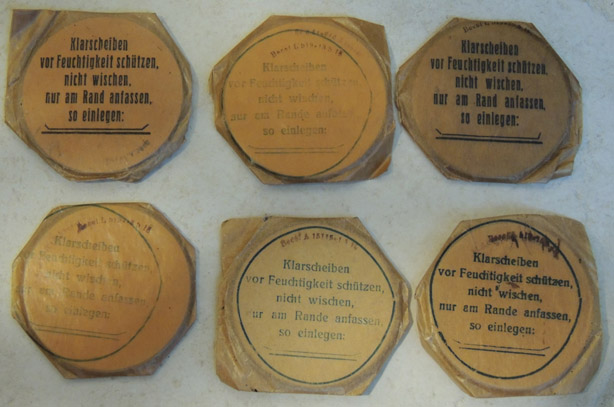
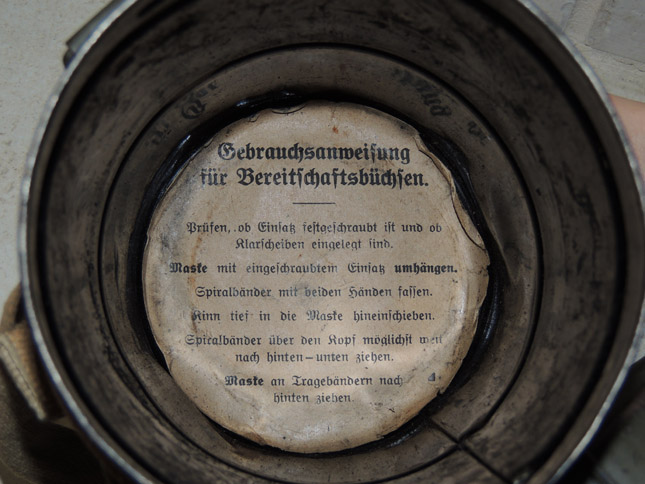
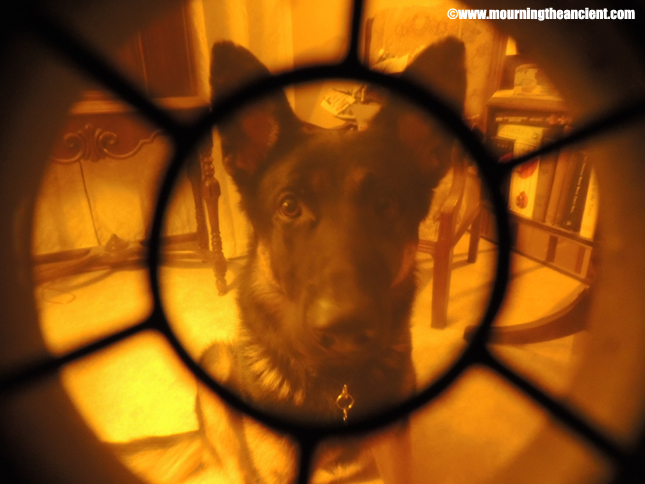
-|-Back to Trash and Treasure Page (1)
-|-On to Trash and Treasure Page (41)
-|-
-|-Back to Review List -|-
